now on
MAKING AN IMPRESSION! Masterpieces on paper from Albrecht Dürer to Dieter RothMore than 80 works from six centuries step into the spotlight: delicate woodcuts, masterly etchings and monumental formats bring the diversity of printmaking to life.
Till 25 January 2026 in Kunsthaus Zurich
More information
Der Sammler - Nachbilder
Marc's 5 m x 6 m wall drawing Der Sammler - Nachbilder is reinstalled in Museum Folkwang, Essen
More information
Group exhibition with Marc Bauer, Dineo Seshee Raisibe Bopape, Rivane Neuenschwander, Sunna Nousuniemi, Radical Imaginaries Studio, Tabita Rezaire, Sarah Ancelle Schönfeld.
Curated by Sabine Rusterholz Petko and Stefanie Böttcher.
From March 7 till June 15, 2025
Throughout the history of art, there have been recurring counternarratives challenging the revailing canon and responding to crises of the time. Even today, artists call for breaking rigid thought patterns and expanding consciousness to create visions of the future that transcend the limitations of the present.
In the dream state, different realities interact. Compared to what is permitted in the conscious waking state, a freer form of perception and knowledge production takes place. There are temporal leaps and connections between different places – alternative realities and utopian spaces for the future arise through the power of the subconscious and imagination. Exploring our dreams provides insight into our joys, fears, and hopes.
The exhibition What is the dream that makes you dream? focuses on dreaming as a pathway to deeper levels of consciousness. Amid multiple global crises and the unsettling news we receive daily, What is the dream that makes you dream? deliberately offers optimistic counterpoints that propose hope, resilience, and healing.
The exhibition is supported by Kultursommer Rheinland-Pfalz, Ernst und Olga Gubler-Hablützel Stiftung, Erna und Curt Burgauer Stiftung, Pro Helvetia and Volksbank Darmstadt Mainz.
Booklet accompanying the exhibition.
Click here or on the image below to see a slide show of the exhibition.

Commissioned by the Menil Drawing Institute in 2023, making it the fifth installment of their ephemeral wall drawing series.
Curated by Kelly Montana.
Bauer’s interest in “image survival,” a theory devised by the German art historian Aby Warburg (1866-1929) in which certain icons, motifs, and symbols persist in history, linking past and present and shaping our understanding of ourselves and our culture. Was the starting point of his wall drawing titled RESILIENCE, Drawing the Line.
Layering images of manmade disaster and patriarchal violence alongside depictions of resistance, aid, and affection, his images, sourced from art history and present-day, evoke political battles over climate justice, humane migration policy, and the rights of marginalized communities.
Bauer considers how queerness and the queer encounter—in its joy, celebration, and fluidity—might present pathways to reinvent how to care for one another and disrupt violent power systems that seek to exploit and control the natural world. The artist’s own memories float across the drawing in individual panels, punctuating the narrative.
Marc Bauer’s “RESILIENCE, Drawing the Line” is a living narrative that evolves with time. 3 iterations are planned over the year 2023-2024. Modifying the wall drawing so that it becomes a place for negotiation and conversation, rather than a definitive statement. To change the narrative. The first iteration of the mural had a major theme of resilience, the second phase of this work focuses on the theme of resistance.
While some elements, like the queer dance scene at the center of the composition, have been maintained but enhanced with vivid colors, other components have been partially covered with more active imagery depicting groups of people gathering in protest. These new elements altered sections of the work that had previously shown people as victims of environmental disasters.
More information on the Menil Collection website
Press release of the Menil Drawing Institute
Click here or on the image below to see a slide show of the exhibition.

You can listen to the podcast on Apple Podcasts, Spotify or Soundcloud.
Marc's part starts at 43'45''.
The result is an 36-foot-wide charcoal and pastel mural, titled RESILIENCE, Drawing the Line, 2023. It combines powerful imagery from art history with contemporary references to create a thought-provoking narrative.
The work will evolve over the course of its yearlong display, with Bauer returning twice to Houston in 2024 to alter his drawing.
More information
Hôpital Saint-Louis in Paris, France
June 3–November 30, 2022
Musée des Moulages was an installation that resulted from a collaboration between art historian Sophie Delpeux and artist Marc Bauer. It was a site specific work made for le Musée des Moulages (the museum of wax mouldings) of the Hôpital Saint-Louis in Paris, that ran from June 3 to November 30, 2022.
The installation was based on the frequent exchanges Sophie and Marc had during the COVID 19 pandemic starting in November 2020.
The museum of wax mouldings at the Hôpital Saint-Louis was opened during an international symposium of dermatology in 1889. It is one of the most important dermatological mouldings collections in Europe. The museum shows 4.800 wax models, preserved in their original display cases. This museum was used for instruction, but also to the promotion of the French school of dermatology, whose origin, as well as its prominence, are linked to the Hôpital Saint-Louis.
Through the different interventions in the space like exchanging some of the official doctor portraits for the portraits of patients, or a large drawing depicting the absent doctors of the symposium of 1889 intermixed with portraits of patients, Delpeux and Bauer underline and disrupt the balance of power between doctors and their patients.
A sound piece based on the text by Sophie Delpeux Soigner l’Image (to be published) connects the history of the Musée des Moulages and the French history of dermatology to express this complex power structure where patients have been made invisible and reduced to their pathology.
The installation aims to care for the wax moulds, the use of gauze in the display cases is a bandage that lessens the violence of their sight and indicates the violence that the patients endured.
Sophie Delpeux is doctor of art history, a former resident of the Villa Medici (2005–2006) and a lecturer at the University of Paris 1 Panthéon-Sorbonne.
Her work focuses on the body, its uses in art, the body-mind links and the uses of representation to transcribe these experiences. She has published Le corps-caméra (Textuel), numerous articles on performative practices (by Marina Abramovic, VALIE EXPORT, Otto Mühl, Dennis Oppenheim, Gina Pane, Carolee Schneemann, Chris Burden...).
Click here or on the image below to see a slide show of the exhibition.

Kinshasa, Democratic Republic of the Congo
September 16–October 23, 2022
Resilience is a collaborative project with Scaly Kep’na, gay activist and founder of the LGBTQI+ association Jeunialissime in Kinshasa.
Marc organized workshops, conversations and interviews with the young queer people that visit the location of the association in the period from March to September 2022.
Learning from these young people and gather testimonies to eventually communicate the experience of this community is the fundament of this project. Marc discussed how sexual identities develop in the African context that is openly homophobic, transphobic, what difficulties young people in the Congo encounter and what their dreams and aspirations are.
With the resulting material, Marc created a large wall drawing that retraces the different narratives, confronts and engages the viewer with this controversial topic in the DRC. The aim of this work is to articulate these issues in art and give publicity and recognition to the gay association.
The work hopes to give young queer people a voice and visibility.
Il n’y a pas d’ancêtre bienveillants pour nous, Il n’y a rien.
Nous n’avons pas leur témoignage,
Nous ne connaissons pas leur vie,
Nous ne saurons jamais, Ils ont été effacés. Ils se sont forcés à être autres,
A être comme vous,
C’est ce que vous exigez de nous.
Pour nous, l’histoire commence maintenant. C’est nous qui l’écrivons.
There are no benevolent ancestors for us, there is nothing.
We do not have their testimony,
We do not know their lives,
We will never know, They have been erased. They forced themselves to be other,
To be like you,
That's what you demand of us.
For us, the story begins now. We are writing it.
With the generous support of Pro Helvetia (Johannesburg)
Click here or on the image below to see a slide show of the exhibition.

September 2–October 14, 2022
Marc shows new works in Galerie Peter Kilchmann, Zahnradstrasse.
The exhibition starts with large scale wall drawings on which oil and charcoal drawings are installed and continues with works on paper and oil on canvas.
The different rooms of the gallery are united by a soundscape by Thomas Kuratli / Pyrit.
For The Default Brain Marc investigates the function of the brain called default mode network (DMN). This mode occurs when our brain is not focusing on any specific task, drifts off and starts daydreaming. The mode creates an uncontrolled flow of free associations and random thoughts… the brain is mind-wandering. The default mode network is the antithesis to the stress of efficiency. It allows us to be truly creative, empathic and reconnect with ourselves on a subconscious level.
The works in this show might reflect these daydream moments or encourage mind-wandering.
Click here or on the image below to see a slide show of the exhibition.

May 21–July 30, 2022
Marc's first solo exhibition at Gilda Lavia gallery revolves around the body and its vulnerability. Presenting a series of new works created for the exhibition, Marc reflects on what are the strategies to protect the body, using symbolic elements of the past such as armour, the images we engrave on them and which have the role of talismans, and again to the symbolic images that we draw on our skin, images that will protect us, that will drive away the enemies and give us power.
Click here or on the image below to see a slide show of the exhibition.

May 15–August 7, 2022
The collection of the Aargauer Kunsthaus is growing steadily and today consists of over 20,000 pieces of Swiss art dating from the 18th century to the present day. The exhibition Davor · Darin · Danach offers glimpses into this extensive public collection of Swiss art and encourages encounters and new discoveries.
www.aargauerkunsthaus.ch
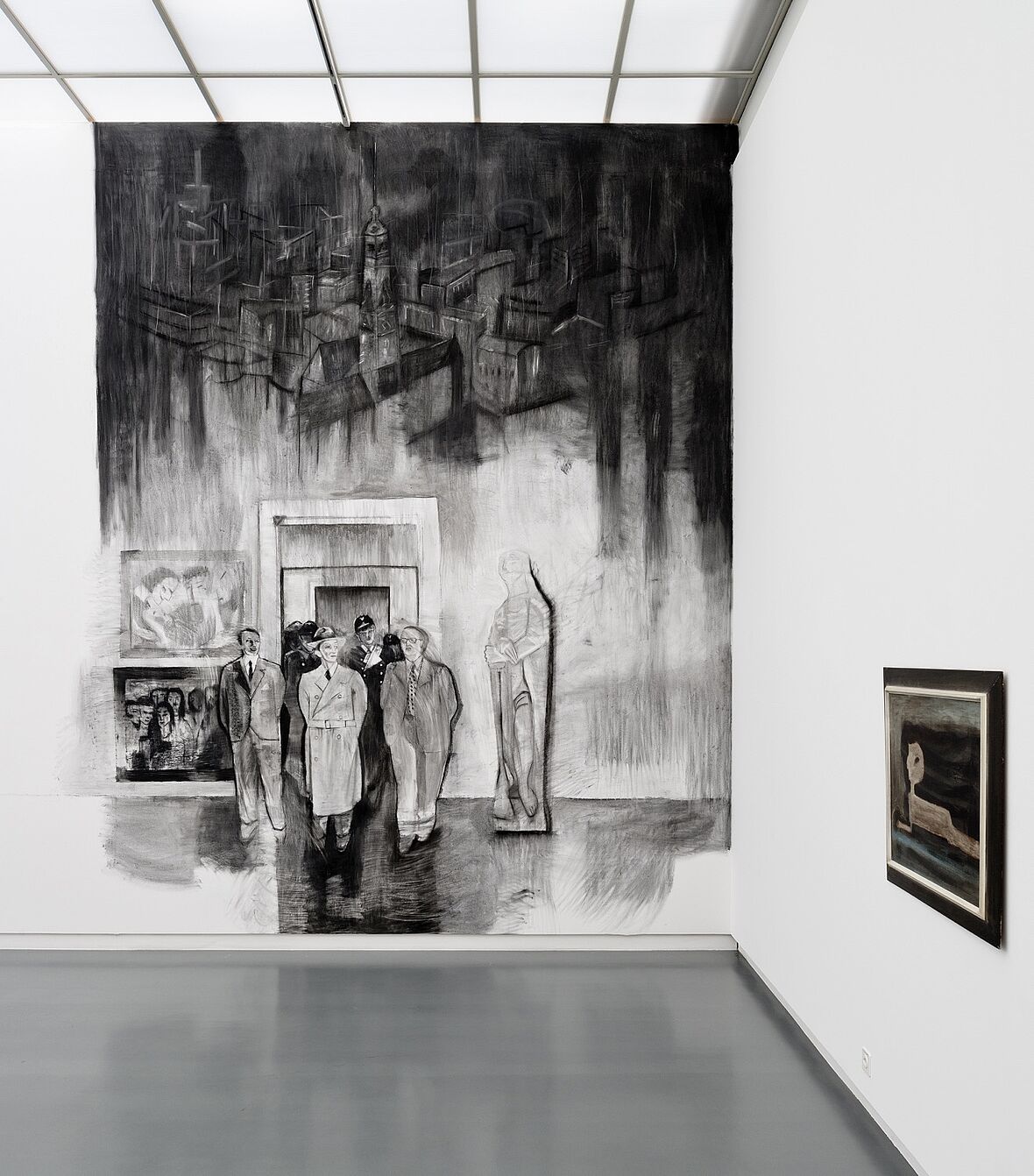
Cazul101 invited Nikita Kadan, Dan Perjovschi, Marc Bauer, SABA (Silvia Amancei and Bogdan Armanu), Mona Vătămanu & Florin Tudor, Adriana Preda, Vitaly Bespalov, Ștefan Sava and Ciprian Mureșan to take part in this project in order to raise money for Ukrainians affected by this war.
Each artist reinterpreted the “Stop War” message in their own manner, the resulting artworks are available for sale starting April 14th. The total amount raised will be donated to a humanitarian organisation that helps war victims in Ukraine.
If you’re interested to acquire one or more pieces by these wonderful artists write an email to Robert Bajenaru of Cazul101.
Click here or on the image below to see more.

The Biennale is themed The breath of the ancestors and will be held at different venues in Kinshasa. Marc was invited by Vitshois Mwilambwe Bondo.
Click here on the image below to see some impressions of the trip.

23 October–27 December, 2021
The title of the exhibition is ambiguous in many ways. In first instance, Second Wind clearly refers to the recurrent motive of the athlete pausing to catch his breath. In the face of enduring exertion, athletes can suddenly experience a new burst of energy just when it feels they had spent it all. Instantly the exhaustion is swept away, like a faint memory and the race seems to begin anew.
The title also refers to finding new energy on a more existential level. Bauer refers to the global pandemic, where we have paused and started again and again. We have been confronted with ourselves while our patience was pushed to the limits.
Every time however, we found a second, third and fourth wind in the face of a second, third and fourth wave.
See the exhibition at Keteleer Gallery here.
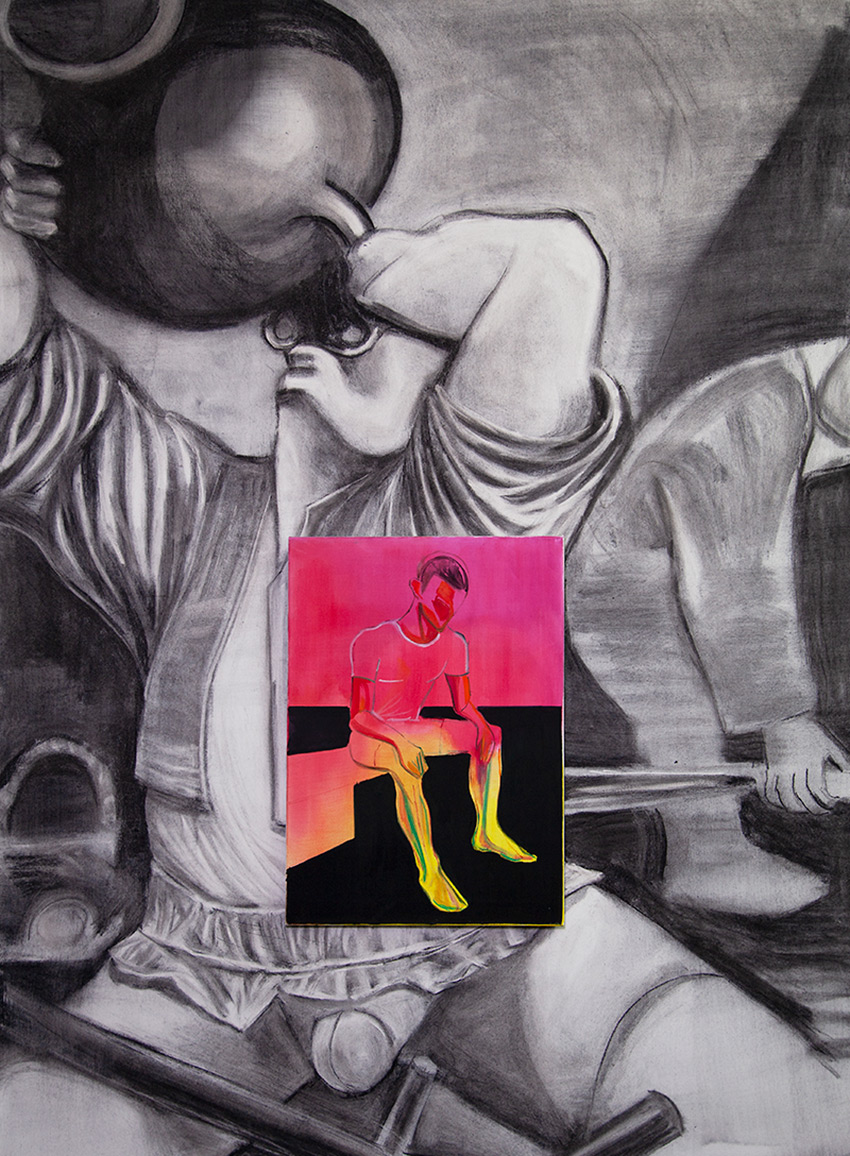
May 7–September 19, 2021
The 1920s were a decade of both progression and backlash. A catastrophic World War followed by a pandemic with remarkable parallels to the current coronavirus crisis awakened people’s thirst for life. At no time in the 20th century was the desire for change more intense.
The exhibition places movements such as Bauhaus, Dada, and New Objectivity, as well as design and architecture icons in dialogue, revealing the formal diversity that characterised those transformative years.
The result is an illustrative spectrum of some 300 works divided into narrative chapters. Invited contemporary artists who explicitly engage with the formal language and themes of the 1920s bridge the gap to the present day
The exhibition is a cooperation between Guggenheim Museum Bilbao and Kunsthaus Zürich, curators: Cathérine Hug and Petra Joos
Audio guide to Marc's work The Snake on the Ground / Mnemosyne in Spanish
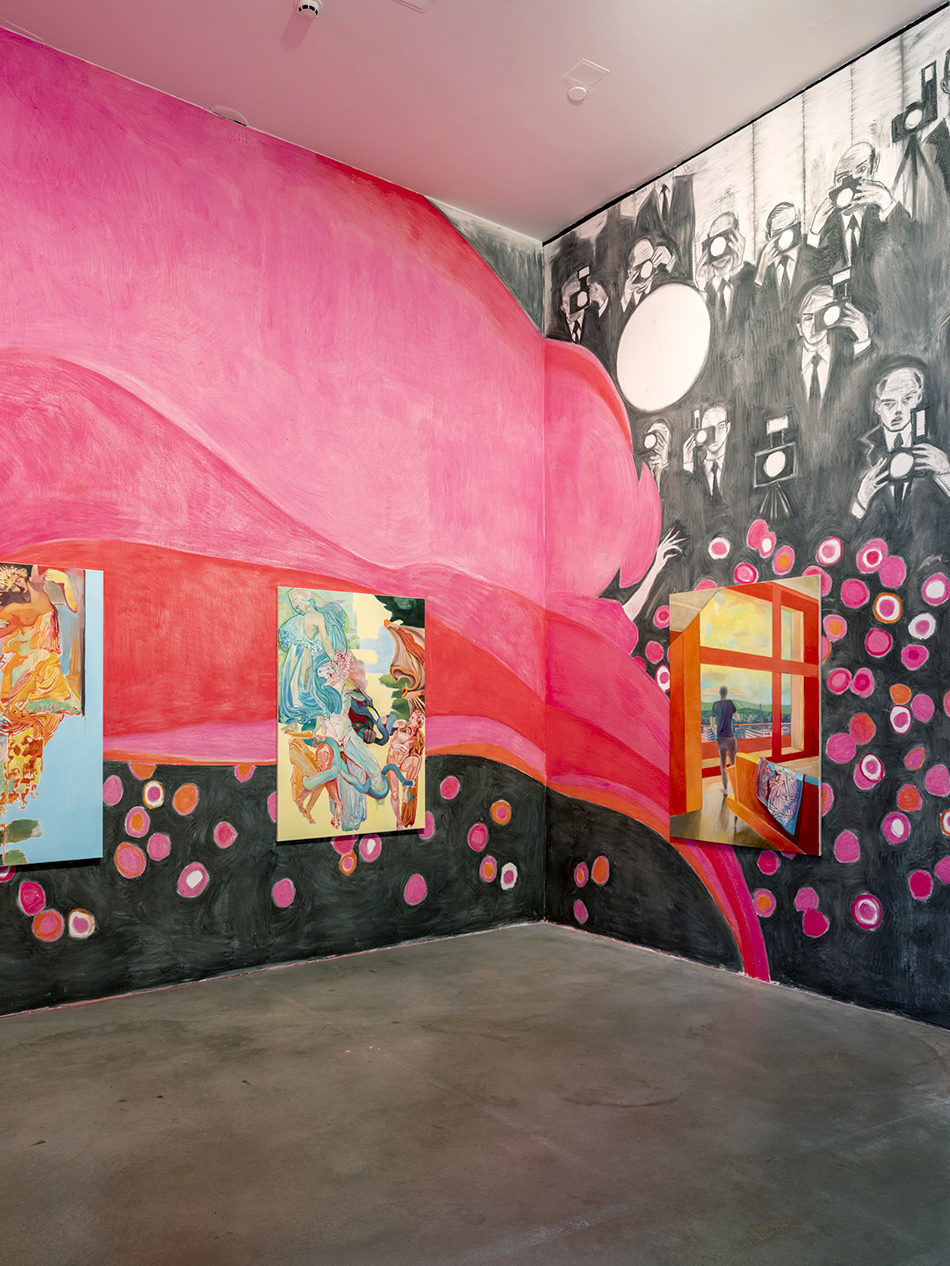
Available at FRAC Auvergne
| EDITOR | Marc Bauer and Jean-Charles Vergne |
| LANGUAGE | French/English |
| FORMAT | 24 × 30 cm |
| FEATURES | 192 pages, hardcover |
| DESIGN | Vincent van der Marck |
| ISBN | 978-2-907672-31-3 |
| RELEASE | February 2021 |
| PRICE | € 19 |
Click here or on the image below to see some pages

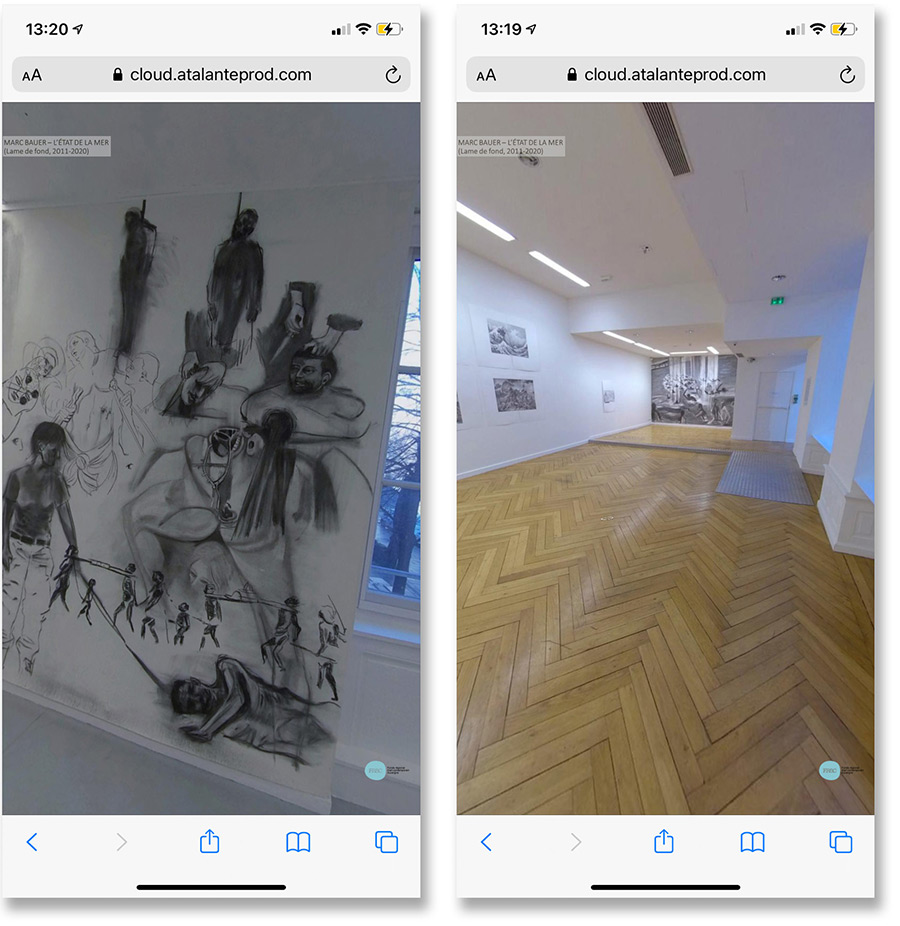
March 3–June 13, 2021
Marc’s exhibition at FRAC Auvergne closes a cycle of 3 exhibitions that began in the Drawing Room, London (2018) and came to the FRAC via a second stop in De La Warr Pavilion, Bexhill on Sea.
L’État de la mer continues the reflection on the interpretation of historical events. Starting point for this project was an image that appeared on June 12, 2018 in the newspaper Le Parisien. It showed the Aquarius ship rescuing migrants from the waters of the Mediterranean Sea. Using this photo as a starting point, Marc undertook extensive research, scouring art history in search of shipwrecks and maritime dramas, establishing links between then and now to point to contemporary violence by highlighting it through its historical precedents
The book White Violence was published by FRAC Auvergne on the occasion of this exhibition and encapsulates the three exhibitions that Marc produced from 2018 to 2021.

It contains next to all the works in the exhibition a conversation between Marc Bauer and Sibylle Berg, interviews with internet pioneer Alan Emtage and AI authority Luca Maria Gambardella. Thomas Kuratli / Pyrit, who composed the soundscape for the exhibition, shares an email from lockdown in Paris.
Guido Faßbender wrote an extensive essay about this installation and work of Marc Bauer. Thomas Köhler wrote an introduction of this show and the work of Marc.
Available at Distanz Verlag
| EDITOR | Marc Bauer and Berlinische Galerie |
| LANGUAGE | German/English |
| FORMAT | 21 × 27 cm |
| FEATURES | 208 pages, 13 color images and 101 b/w images, Hardcover |
| DESIGN | Vincent van der Marck |
| ISBN | 978-3-95476-363-4 |
| RELEASE | October 2020 |
| PRICE | € 38 |
Click here or on the image below to see some pages.
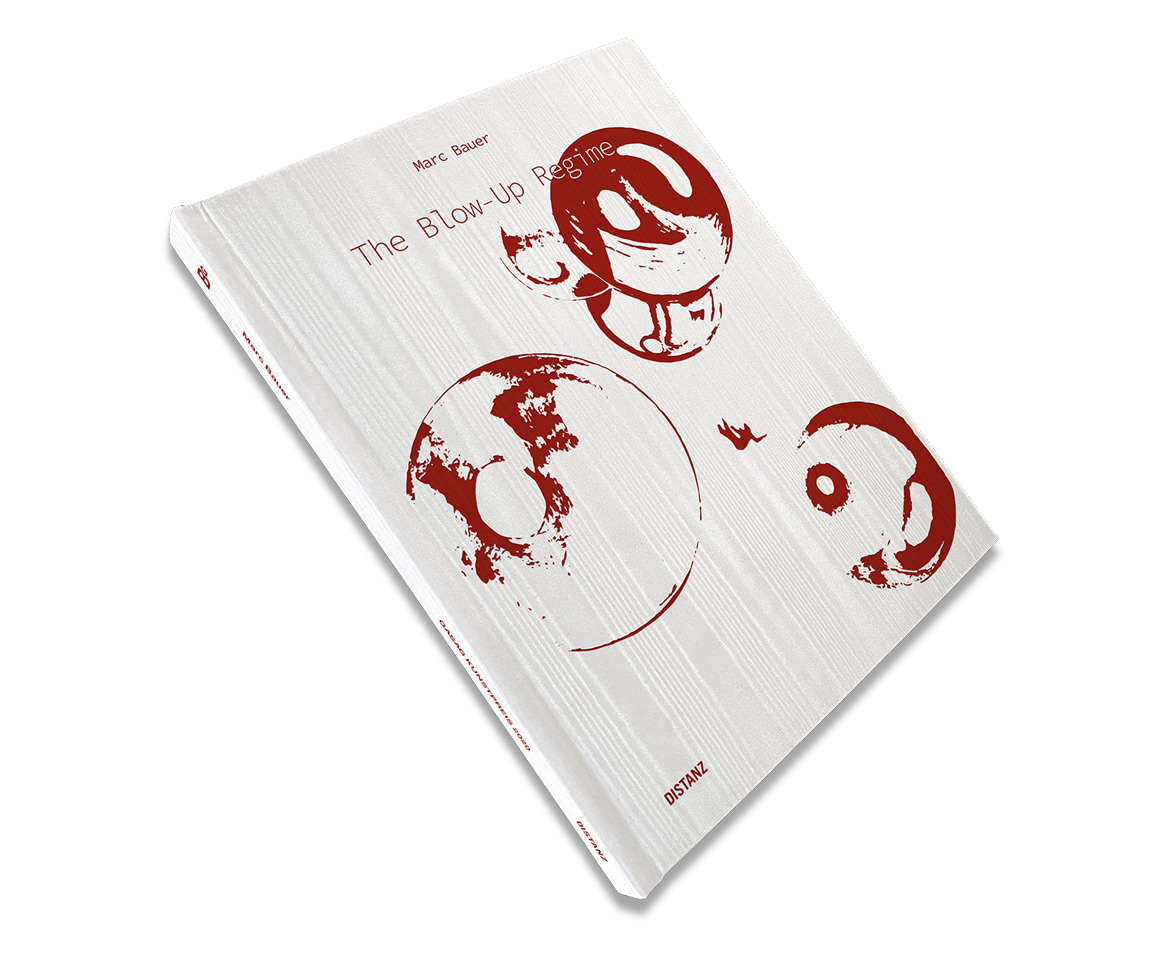
Drawn from his love of electronica, dark wave and kraut, Pyrit creates songs and soundscapes of a futuristic world. Desires, questions and anxiety melted together into one musical entity, into Pyrit’s own cosmos – a unique, experimental, electronic and dark Populärmusik.
The album The Blow-Up Regime is now available on Bandcamp, Spotify and iTunes.
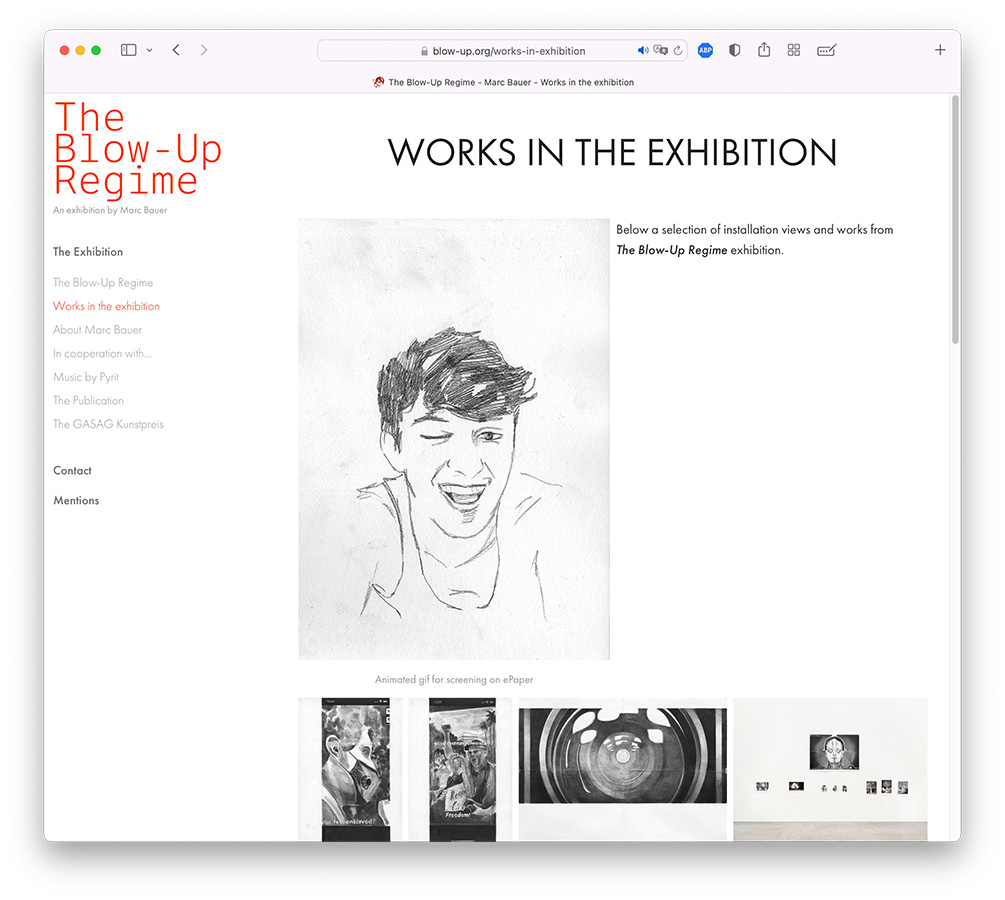
September 9, 2020–August 16,2021
The subject of this exhibition is the history and current impact of the Internet. Marc sketches the portrait of a society that is in a state of upheaval due to digitalisation and accelerated technical progress.
After a wide-ranging research into the history of the Internet, from the first computers to the present day, the central theme surfaced: how the omnipresent digitalisation influences our perception of reality, the individual and society.
This resulted in new, suggestive narratives composed of historical events and fictional elements. For The Blow-Up Regime Marc Bauer developed a multimedia concept for the first large exhibition hall of the Berlinische Galerie. The exhibition is an interplay of room-high, monumental wall drawings, supplemented by a soundtrack, drawings on paper pinned to the wall, and digitised drawings on e-paper displays distributed throughout the room.
Alongside the exhibition a book is published that delves deeper in the different subjects and and themes of the exhibition.
The publication The Blow-Up Regime is available at Distanz Verlag and at the Berlinische Galerie book store.
More information, installation views and photos of the works can be seen on the dedicated website of the exhibition www.blow-up.org.

The prestigious national prize honors personalities from the worlds of art and architecture as well as criticism, curation, and research whose work is of particular relevance and importance for contemporary art and architecture in Switzerland and beyond.
Jury Statement
Drawing is not only the primary medium of Marc Bauer, it is also the message. Sketch-like or hatched passages, subtle chiaroscuro, stark black and white contrasts form imagery which appears and hints at history. Imagery which follows the medium’s ambivalence: precision in the formal realisation and the circling of the imaginary. This is what makes for the specific quality of the work of Marc Bauer.
History draughtsman
One of the most recognised Swiss artists, Marc Bauer has been creating socially and politically engaged art for more than twenty years now. He appropriates contemporary history and focuses on its dramas and excesses, in order to challenge the resulting ideology of power and human behaviours. Marc Bauer addresses these issues by creating fragmentary narrative threads in which the gaps remind us that memory is invariably selective. The artist combines personal and collective history and develops powerful narratives in which the text engages in a dialogue with the figures. Murals, animations, prints or graphite compositions applied to walls: the art of Marc Bauer is a theatre laid bare, in which mankind presents itself in its most terrifying and profound form.
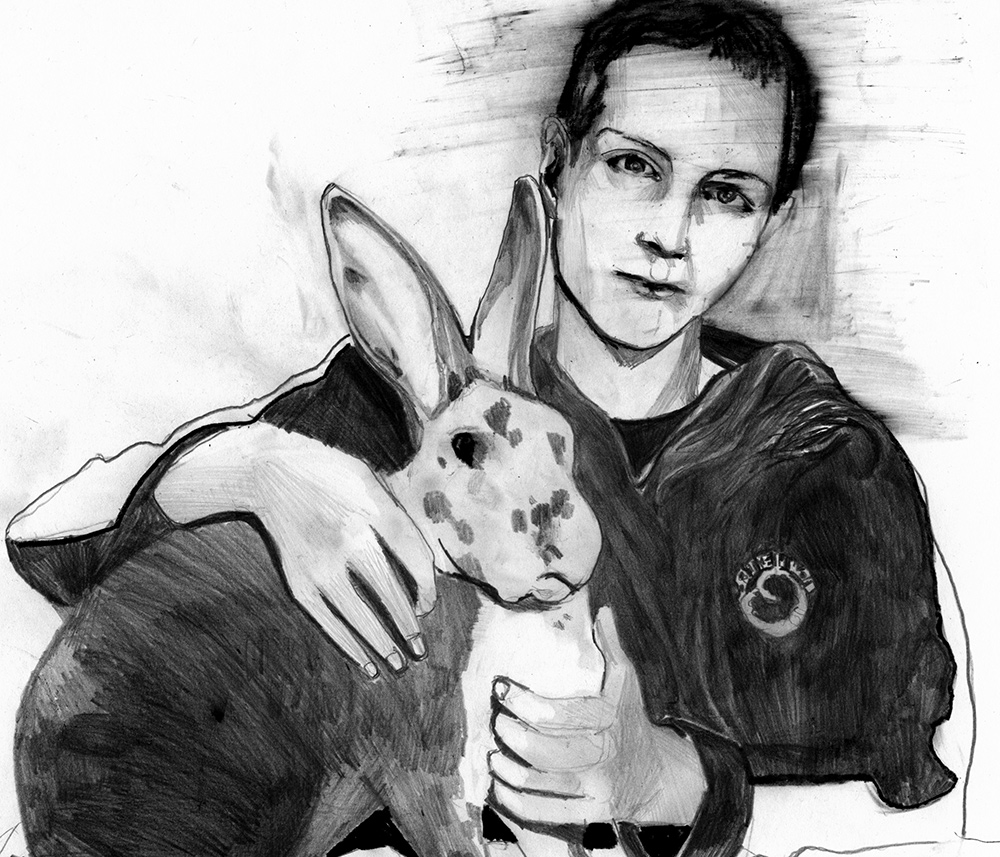
Istituto Svizzero, Milano.
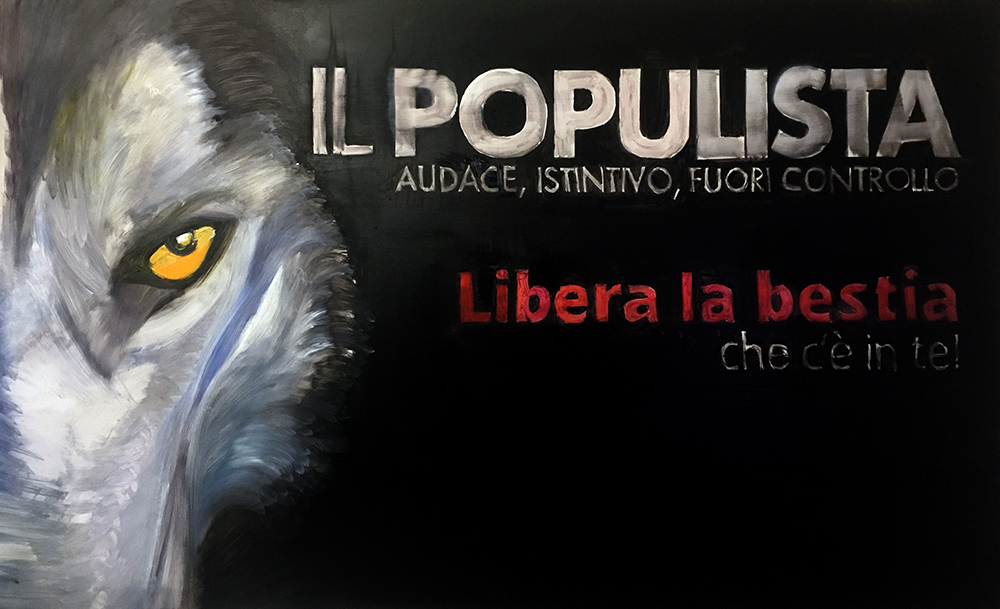
More information
February 2–July 14, 2020
‘Likes’ and ‘shares’ are social media’s capital, today’s capital. One simple click is enough to express one’s own approval and, with a few words, one can spread his own opinion or discord. Our smartphone’s glossy surfaces act as transmitters by keeping us connected with our followers.
For his exhibition Mi piace • Commenta • Condividi, A Rhetorical Figure, Marc Bauer traces the mechanisms and rhetorical devices employed by digital communication, at a time when the world’s politics is sometimes handled on Twitter through ‘aggressive’ capital letters and where cat videos and hate speech content are spread through the same digital waves.
The works—created specifically for the exhibition in Milan (drawings, a sound installation, and a large site-specific mural)—take their cue from Marc Bauer’s study of Matteo Salvini’s Twitter communication, Interior Minister of the Italian government until September 2019. The artist’s drawings, often in black and white and sometimes in colour, also include images of cats, in particular the Gattini con Salvini, which, according to the Lega‘s party leader, are supposed to eat the Sardine, a movement born recently and against the right-wing populism. So, cats and fish. But also, dogs and wolves: the dog from the popular Italian comic book Dylan Dog or the wolf from the online magazine Il Populista. And above these, in a large mural, lie the disquieting winged creatures of an etching by Francisco de Goya.
Click here or on the image below to see images of the exhibition.

The Architect is an animated silent movie, from an original script, by Marc Bauer. The music is specially composed and performed by the French band Kafka.
The movie opens with quotes from the film Nosferatu, eine Symphonie des grauens (1922) by F. W. Murnau. Then moves to Berlin 1922 where at the premiere of Nosferatu, a boy frightened by the images, in a state of terror, has a vision about his future; The boy and his alter ego experience the Second World War and its consequences. The epilogue, shows F.W. Murnau in 1931 driving away from Hollywood, crashing his car on the way to Santa Barbara. Just before the car crashes, Murnau too, has a vision about the future. He sees WWII precisely how it happened. The vision of the boy is a poetic version of the events, Murnau’s vision, although in the colourful ’New World’, is the dark reality of what happened.
See more clips here or write us at for more information and access to the full film.
February 1, 2020–January 3, 2021
Marc Bauer’s Mal Être / Performance is a new body of work commissioned jointly by Drawing Room and De La Warr Pavilion and is the artist’s first solo exhibition in a UK public gallery.
Bauer’s chosen medium is drawing which he uses here to make small and large scale works on paper, a wall drawing and an animation. Mal-Ȇtre / Performance features the motif of people on boats throughout history, from ancient Greece to contemporary media footage. All of the works are drawn in graphite, and images range from those inspired by fifteenth-century Catholic ex-voto paintings, to Théodore Géricault’s The Raft of the Medusa, up to Aquarius, the boat that rescued migrants in the Mediterranean Sea in 2018. Using the slow and cumulative process of drawing and erasing, Bauer’s project brings the past into the present in his investigation of humanity.

The prize was awarded by a jury consisting of Julian Charrière, Andreas Fiedler, KINDL – Centre for Contemporary Art, Dr Thomas Köhler and Dr Stefanie Heckmann, Berlinische Galerie, Dr Christina Landbrecht, Schering-Stiftung, Birgit Rieger, Tagesspiegel and Dr Julia Wallner, Georg Kolbe Museum.
The prize includes a solo exhibition in the Berlinische Galerie.
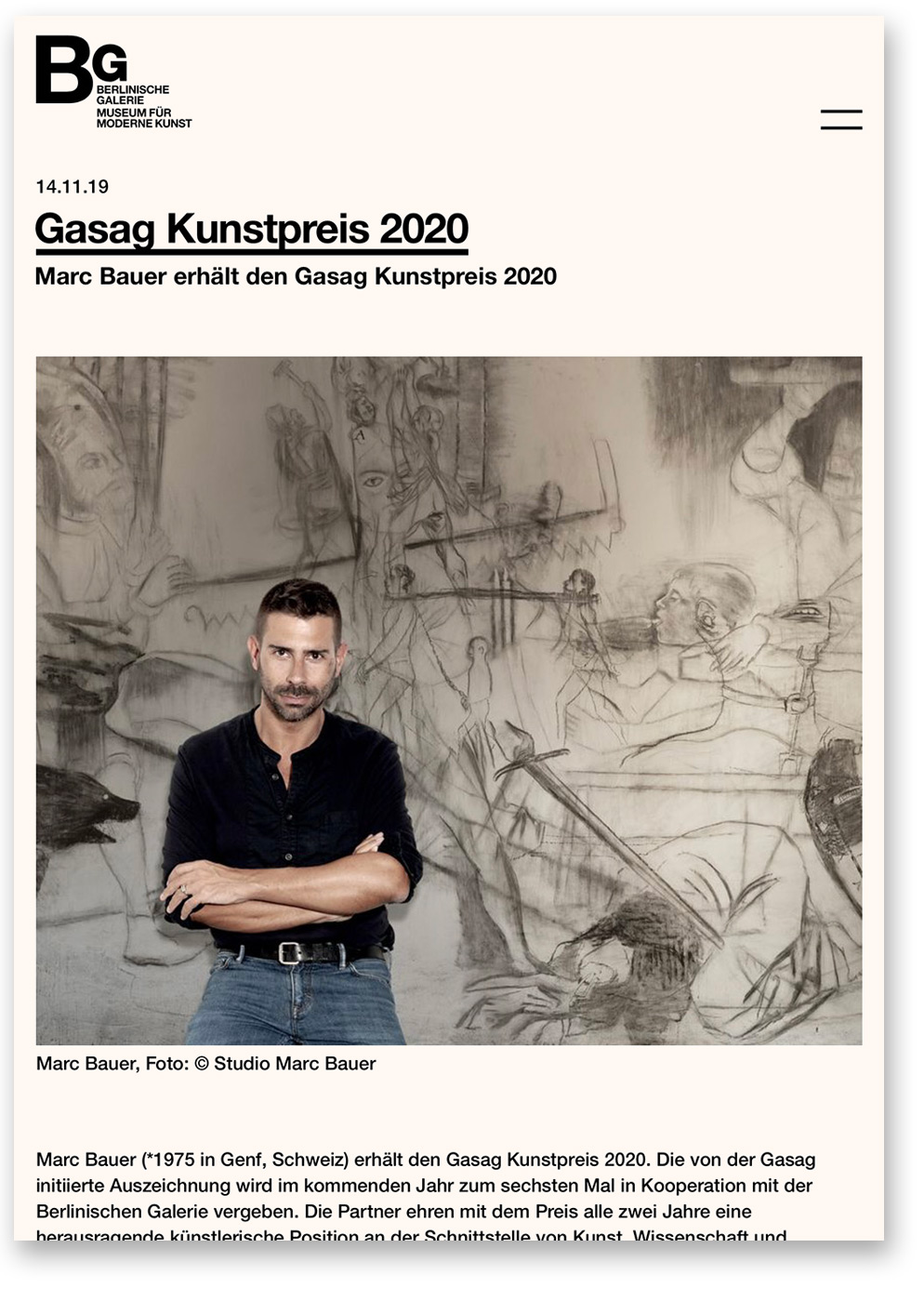
Article in The Fourdrinier, October 2019.
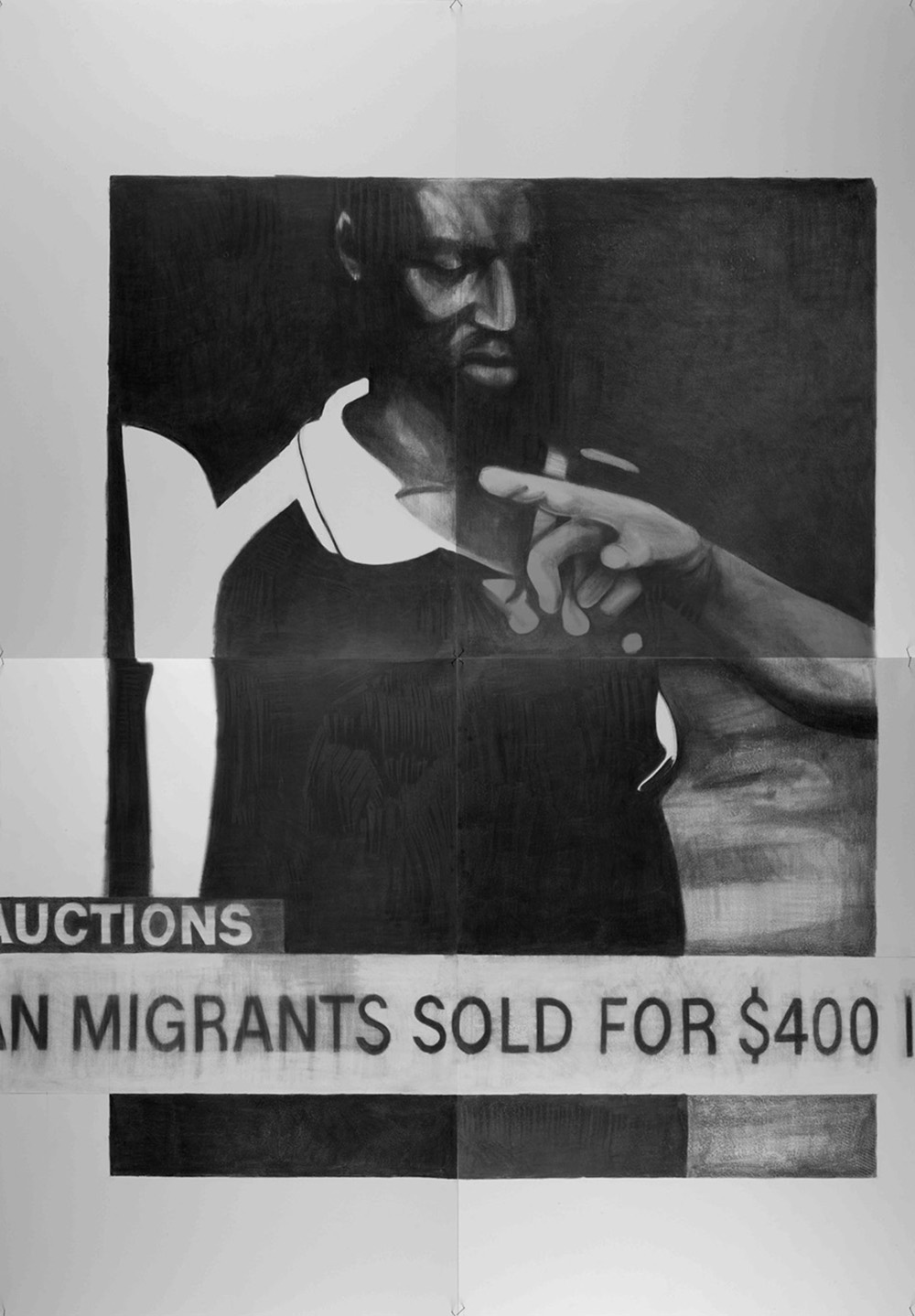
September 12–November 17, 2019
The exhibition Mal Ȇtre / Performance, Marc's first solo exhibition in a British institution, features the motif of people on boats and migrating throughout history. From ancient Greece to contemporary media footage. All of the works are drawn in graphite, and images range from those inspired by fifteenth century Catholic ex-voto paintings, to Théodore Géricault’s The Raft of the Medusa, up to Aquarius, the boat that rescued migrants in the Mediterranean Sea in 2018. Using the slow and cumulative process of drawing and erasing, Bauer’s project brings the past into the present in his investigation of humanity.
He says:
This new installation of drawings is an attempt to understand the relationship between images, to see what impact they have on our perception of reality, and how they condition our way of thinking and define our identities.
The first part of the exhibition title, Mal Ȇtre, roughly translates from the French to ‘being in a bad way’. This condition unites images of people in transit across seas today and in the distant past. Mal Ȇtre also refers to a sense of unease the viewer may experience when viewing these images, with Performance referring to the various roles we adopt.
Marc Bauer describes drawing as 'a way for me and the viewer, to comprehend reality in all its complexity – subjectively, politically, symbolically - and show how history, memory and shifting power structures shade the present.'
Drawing Room, London
Click here or on the image below to see images of the exhibition.

August 31–November 11, 2019
The comprehensive group exhibition explores the multi-faceted and multi-layered connections between art and HIV/AIDS from the 1980s to the present.
Not only the blurred boundaries of art production and activism in relation to HIV/AIDS are addressed, but also artists who continue to define this discourse today. On display will be positions that demonstrate the diversity of (artistic) approaches to the HIV virus and AIDS. One focus is on works that deal with themes such as isolation, transformation, temporality and transience with regard to the politics of the body and representation. Since the introduction of highly active antiretroviral therapy in the second half of the 1990s, AIDS is often described as a condition from the past and seems to have become less significant in our current view of society. However, nearly 1 million people worldwide continue to die each year as a result of AIDS. In four chapters, the exhibition attempts to unfold the complexity of the various narratives surrounding HIV/AIDS and discuss the fragility of these stories from a contemporary perspective.
Marc Showed in this exhibition a large work titled AAAARGH!!! Do you see my rage!... A Recollection of Desire and Annihilation. A work about the representation and mediatization of the AIDS crisis in the 1990s.
The installation reflects Marc as a teenager discovering sexuality and identity. For him, as a young gay man in the 90s, it was impossible to find positive representation of gay men and gay culture. In popular culture, the homosexual was the deviant, the murderer, the other, and ended up dying a horrible death.
charcoal and color chalk on wall, oil painting and pencil on coated aluminium (Dibond), detail, 2019. Courtesy the artist and Galerie Peter Kilchmann
Click here or on the image below to see images of the installation.
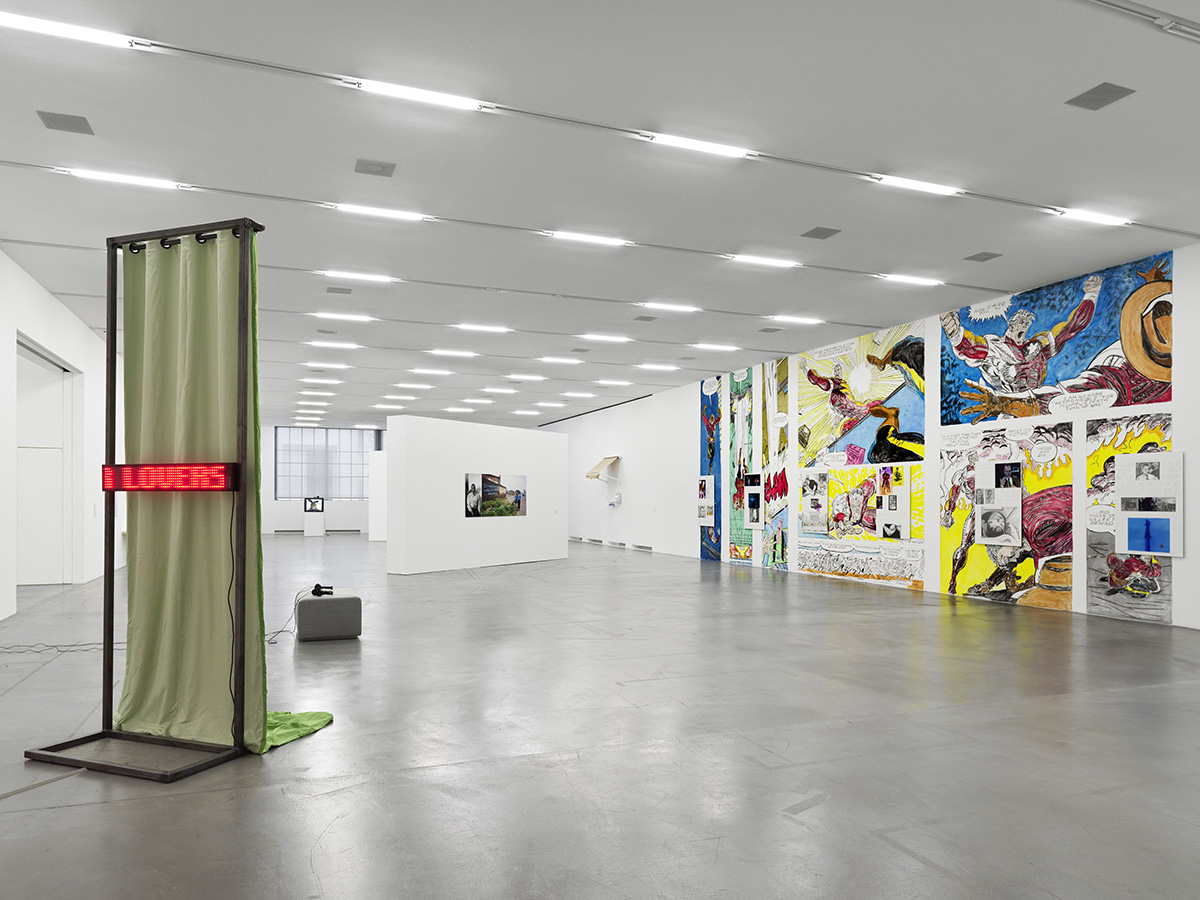
July 1–September 27, 2019
with Marc Bauer, Gabriella Ciancimino and Oscar Giaconi.
More information

July 5–to September 15, 2019
At the gates of Pontivy, in the hamlet of Sainte-Tréphine, stands a chapel dedicated to a young girl who was beheaded in the 6th century by her husband, the tyrant Conomor.
In the chapel this history is told in eight medallions painted in 1706 by the Le Corre family of Pontivy on the vault's paneling.
The statues of Saint Trephine, beheaded, and Saint Louis frame the altarpiece in the choir.
In this setting Marc made a wall filling wall drawing in charcoal.
More information
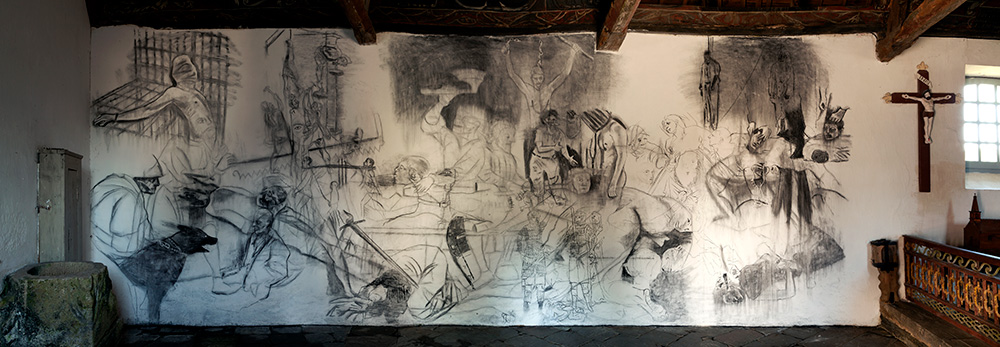
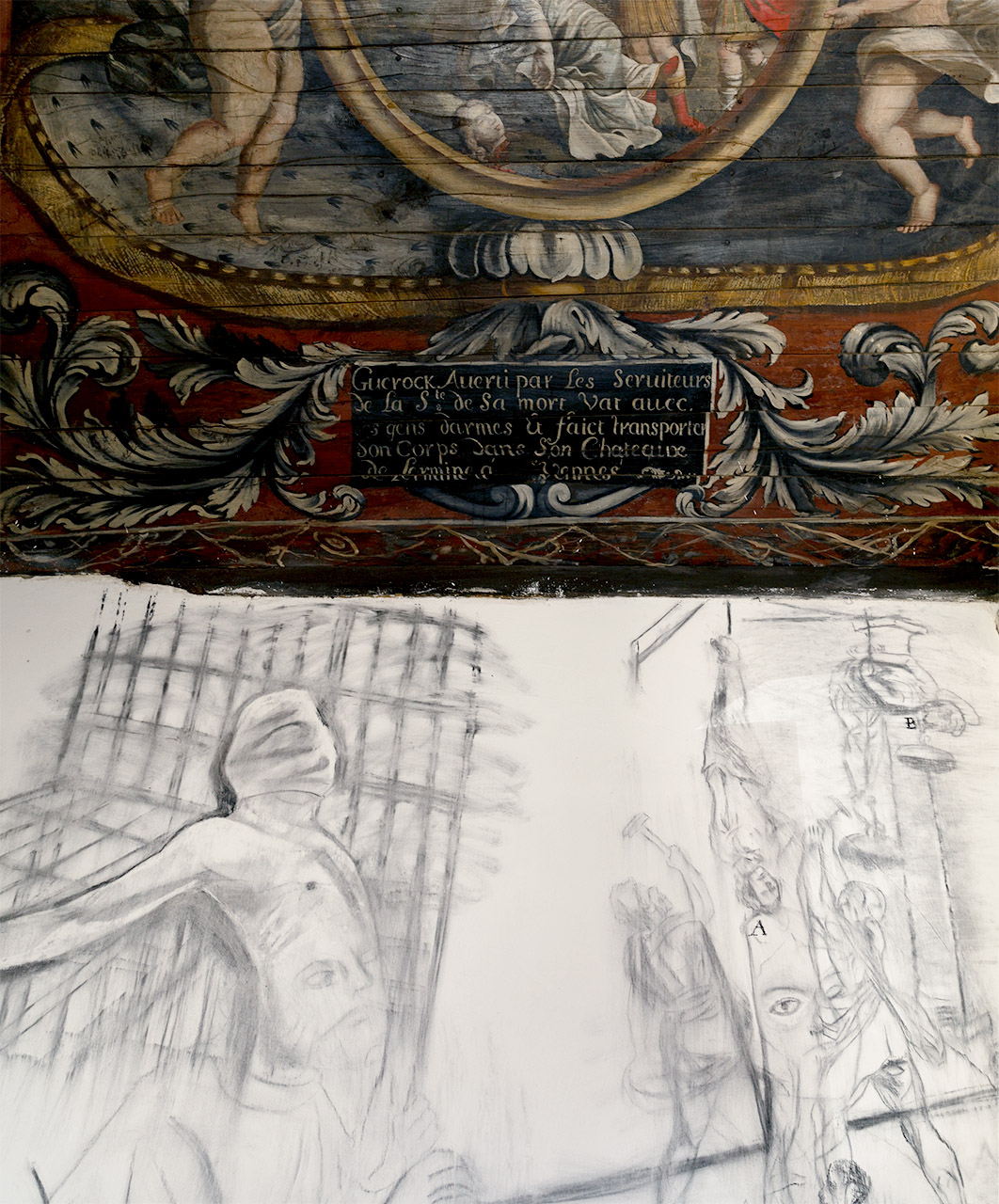
Organised by The Schwarz Foundation and curated by Katerina Gregos
February 28–April 14, 2019
More information
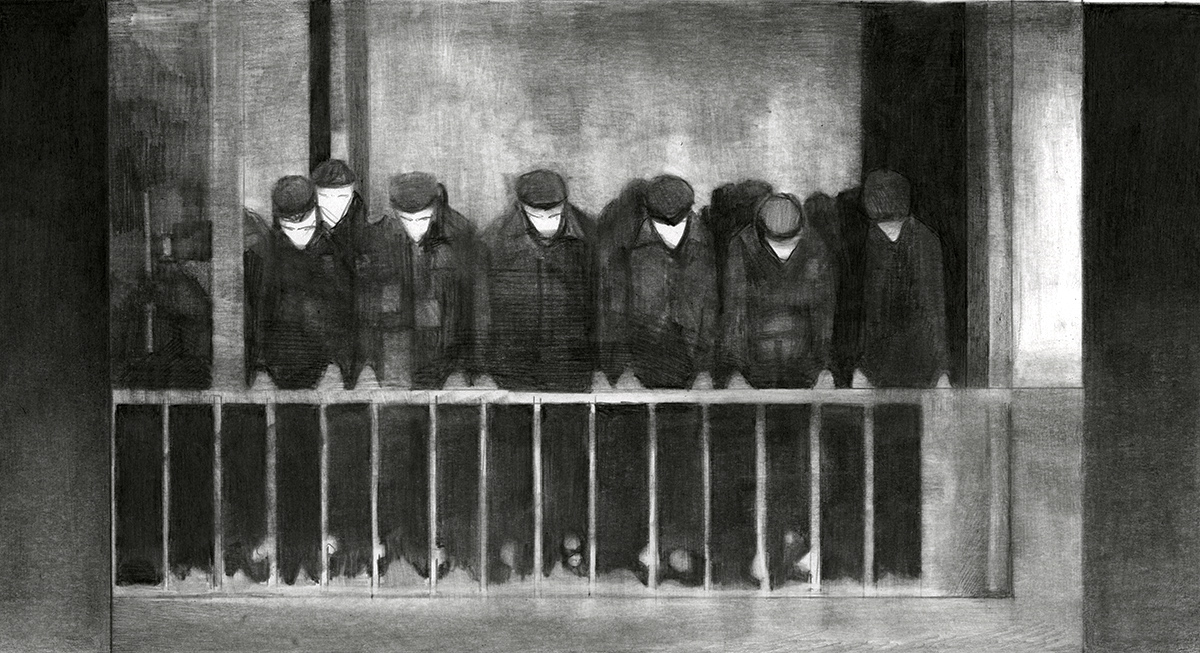
November 17, 2018–February 24, 2019.
In times of digitalization and social media, drawing is interestingly once again increasingly becoming the focus of contemporary artists. This may not be a coincidence, as the medium is generally regarded as the most direct form of artistic expression. With its intimate appeal, its narrative and subjective research potential, the drawing gesture exerts a fascination that seems more topical than ever.
More information
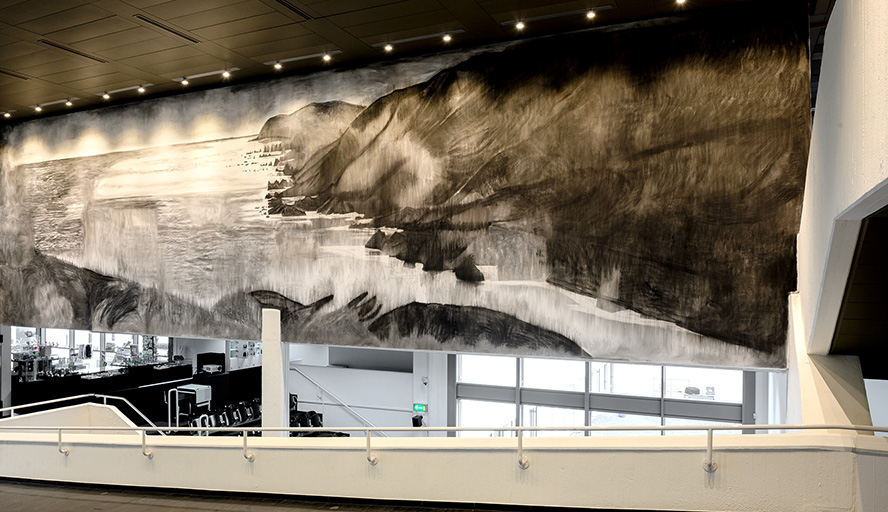
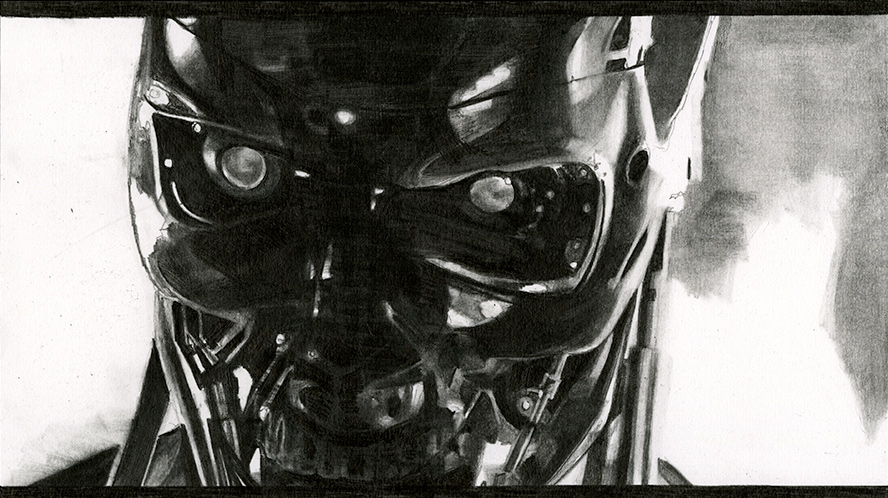
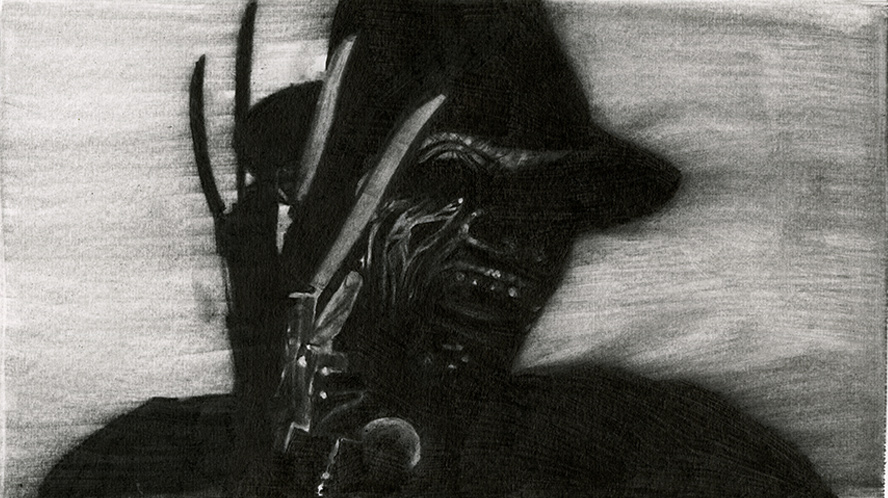
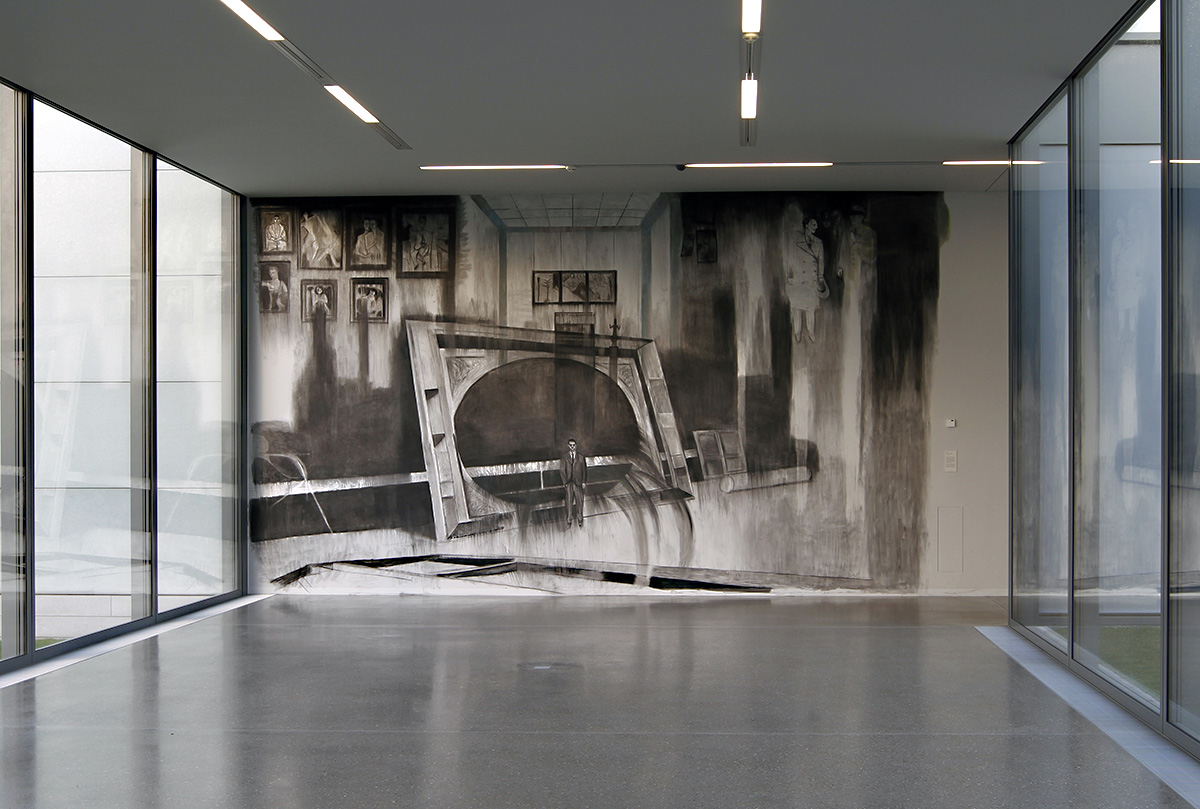
Artistic Director: Mami Kataoka
March 16–June 11, 2018
At the Museum of Contemporary Art Australia, Bauer presents a commissioned installation featuring Arsenal, Shipyard, Brest, Brittany, France, 2018, a site-specific wall drawing, alongside A Brief History of Emancipation, 2018, a series of works on paper, and Diary, Madam F.C., 2017, sixty pieces of hand-made faience.
Bauer’s installation is inspired by interviews conducted in Quimper and Brest, two towns located in Brittany, France. Bauer spoke to women who worked at a naval shipyard, a fish processing plant, and a ceramics factory and painting atelier, from 1960 to 1990; places of employment where the workforce was largely dominated by men.
The ceramic installation relates a fictional narrative about a woman who worked in a shipyard in Brest – a location well known for the construction of French Army warships. Bauer has hand-painted the pots, plates and other ceramic objects with monochromatic images and text that reveal intimate vignettes of everyday domesticity. The accompanying works on paper and site-specific wall drawing provide context derived from the lives of the women Bauer interviewed; articulating their struggle for emancipation and better working conditions.
Bauer uses found images as a starting point for drawings realised as site-specific installations that combine works on paper with illustrations rendered directly onto the walls of the gallery space. While Bauer may take inspiration from a photograph of a historical event, a film still, or an image found on the internet, his drawings are not an exact replication or facsimile. Rather than duplicating a photograph, Bauer instead develops it into something else. Drawing from memory, he creates a world complete with fictional characters and narratives, embedding them in a familiar representation; allowing the viewer to witness an alternative existence through the subjective lens of his own experience.
Text by the Biennale of Sydney
More info about Marc at the 21st Biennale of Sydney
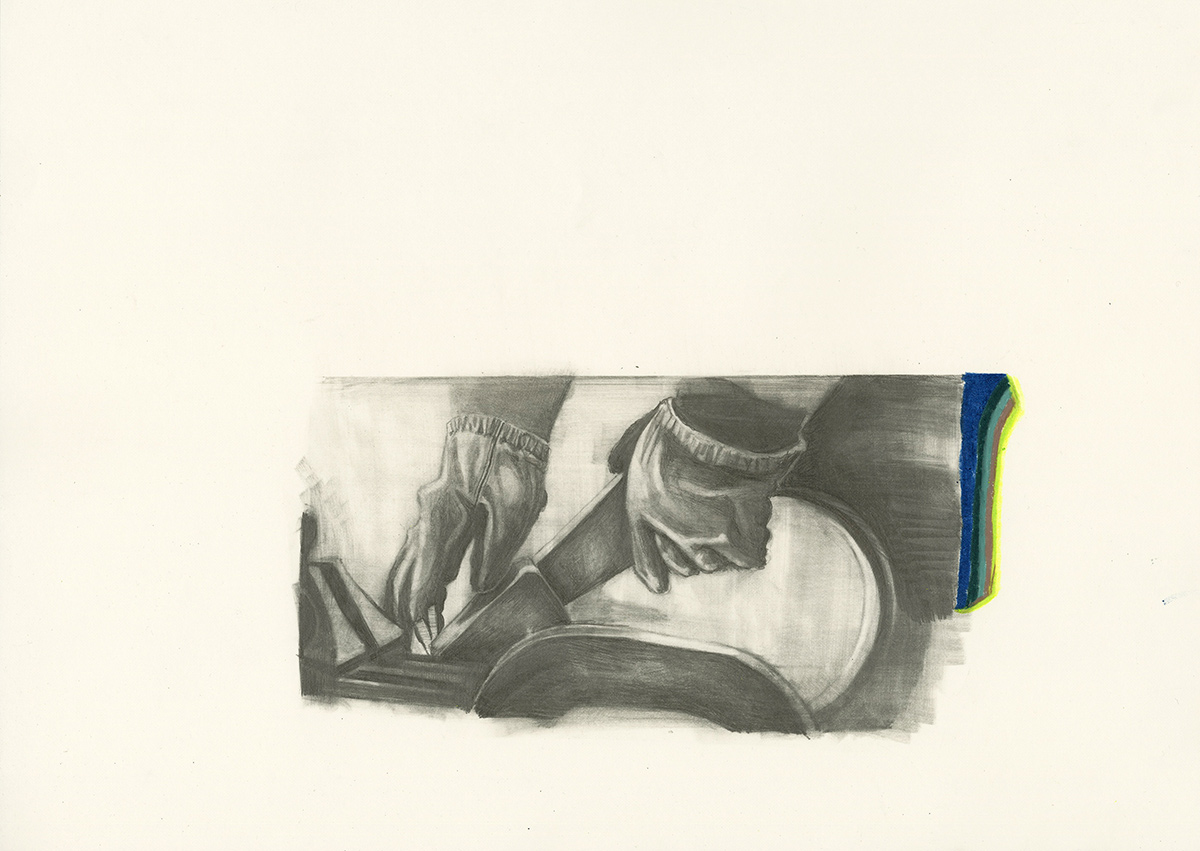
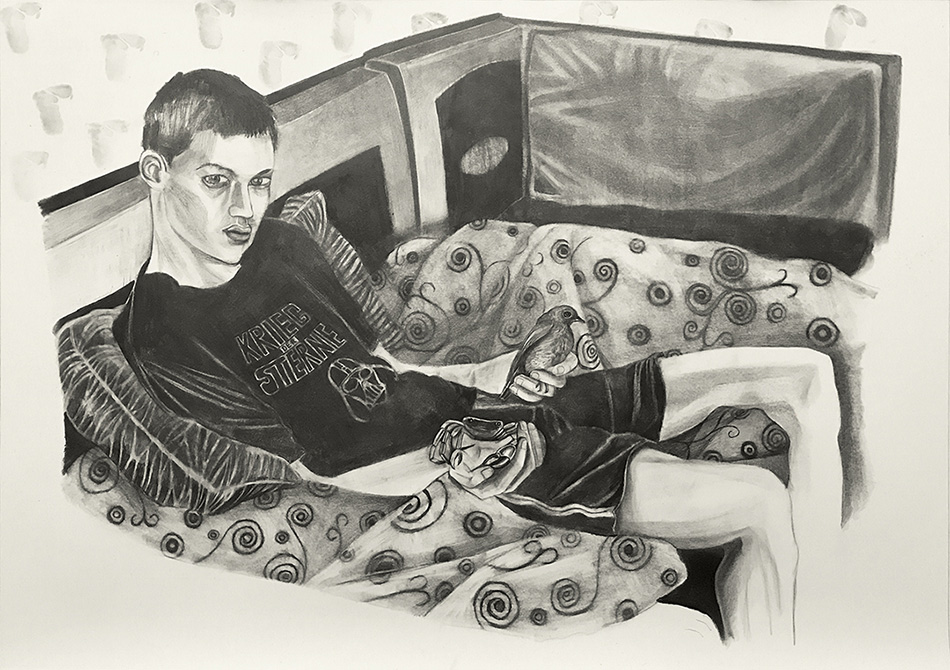
AVONDLAND. Solo exhibition at Deweer Gallery: 07 FEBRUARY - 11 MARCH 2018
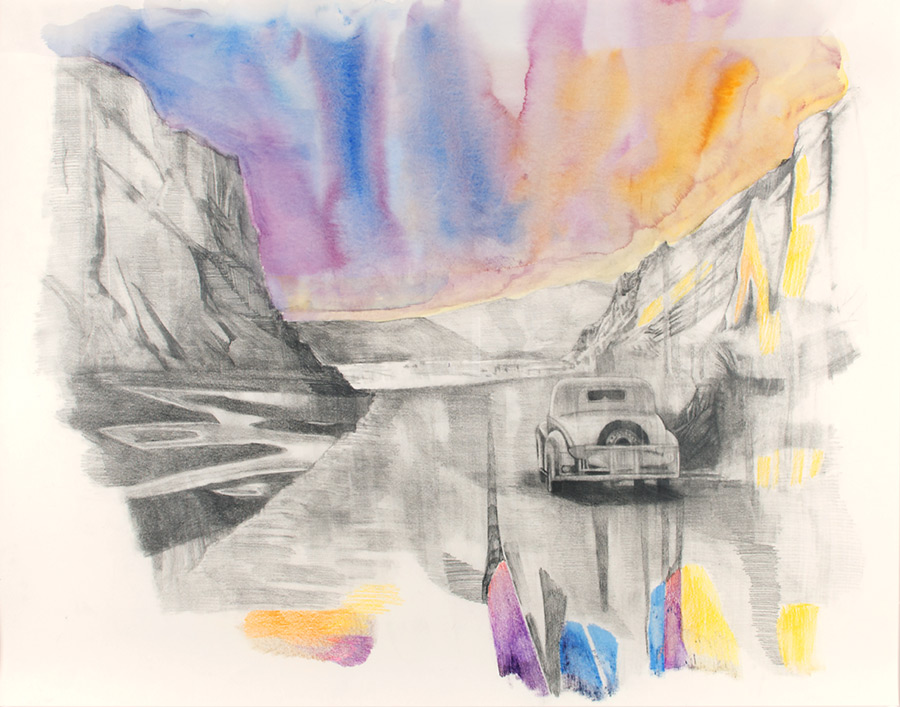



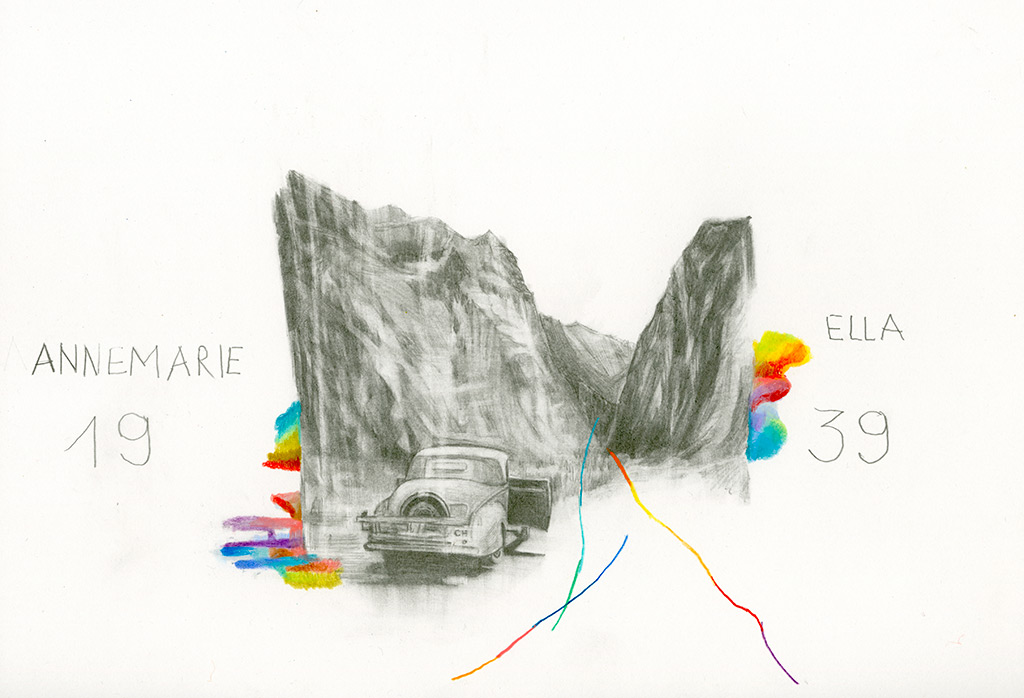
Solo exhibition at Galerie Peter Kilchmann
An unser Schicksal von Heute und Morgen
Opening February 24, 2017
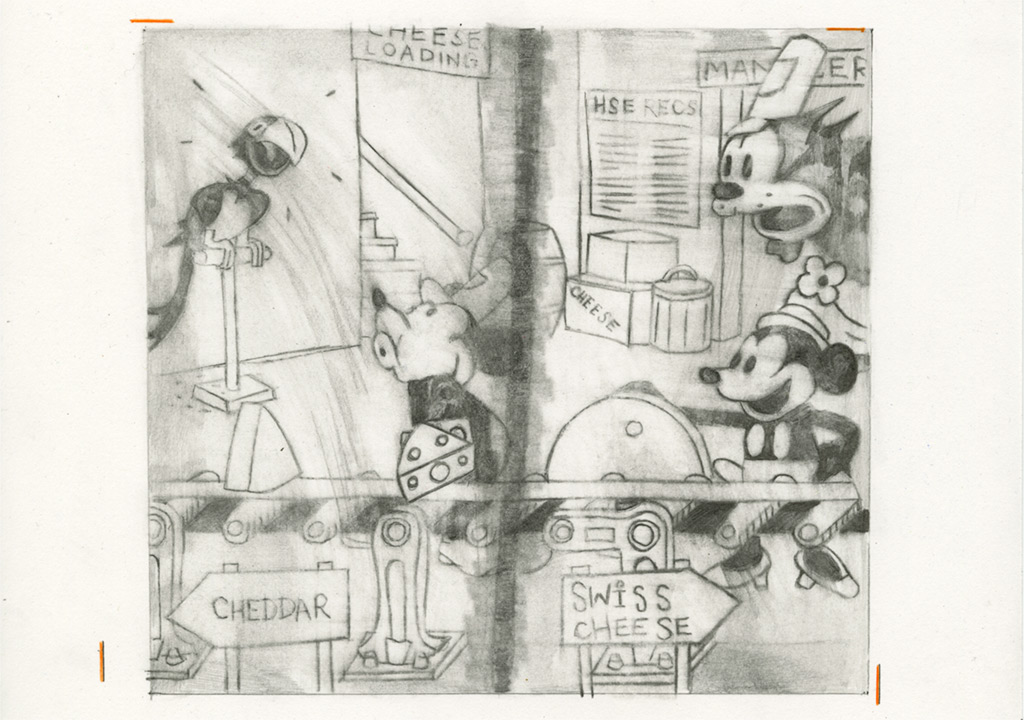


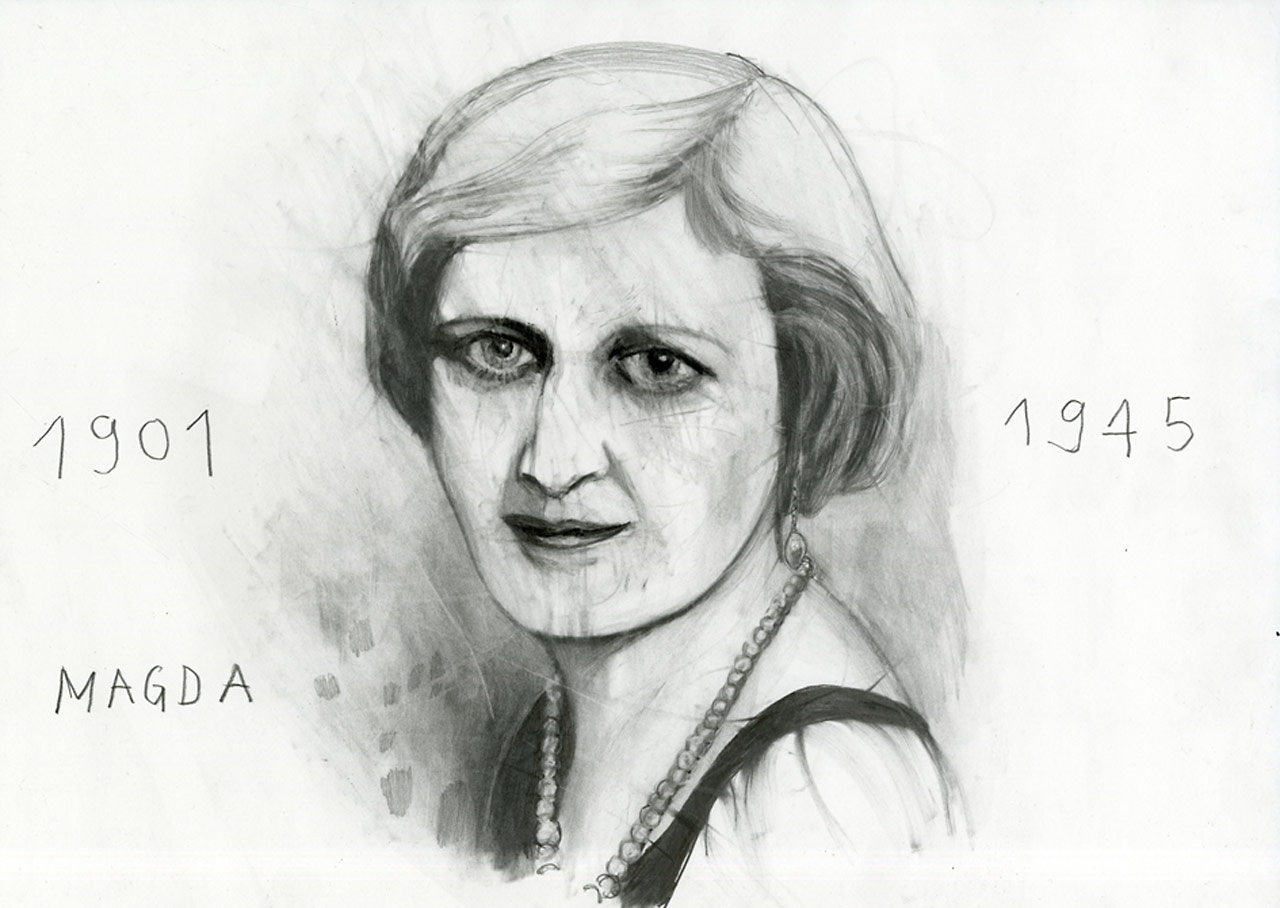
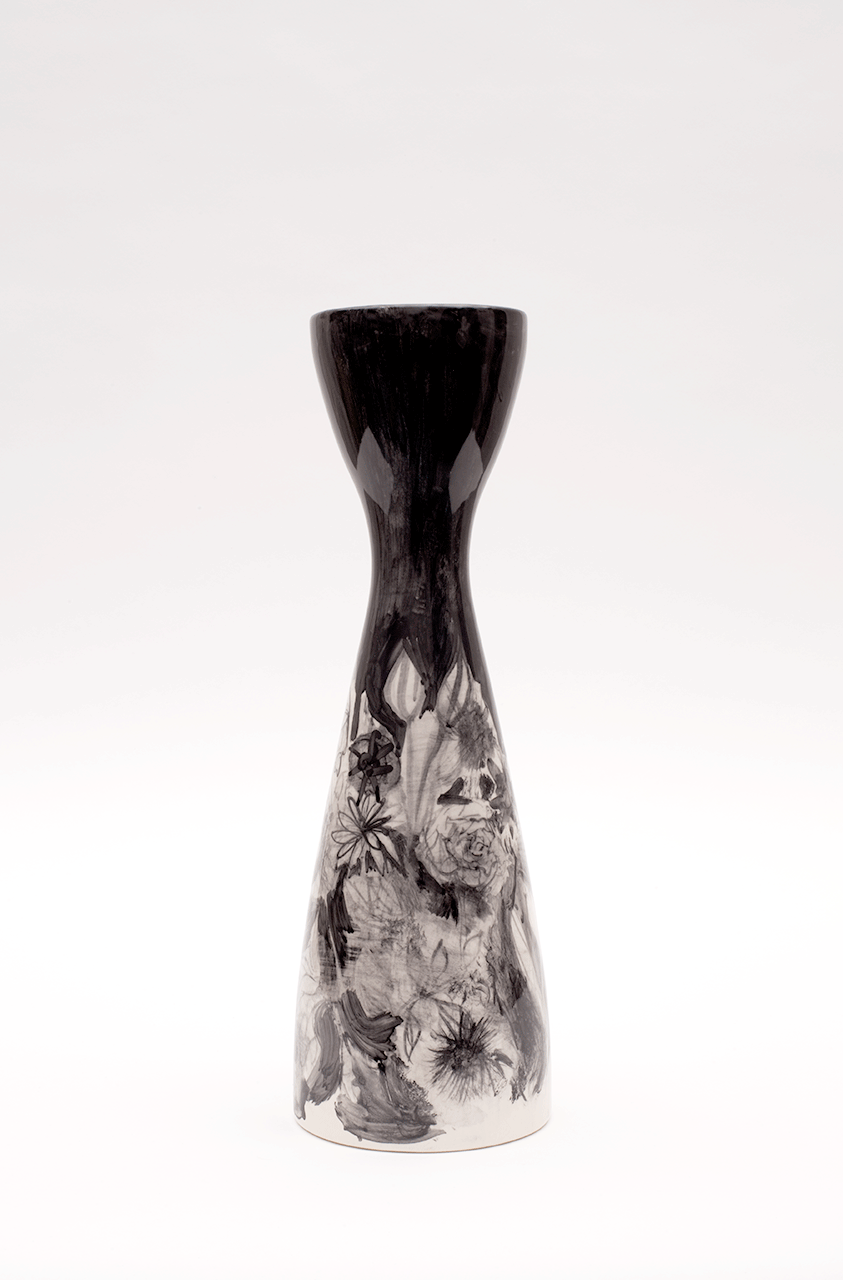

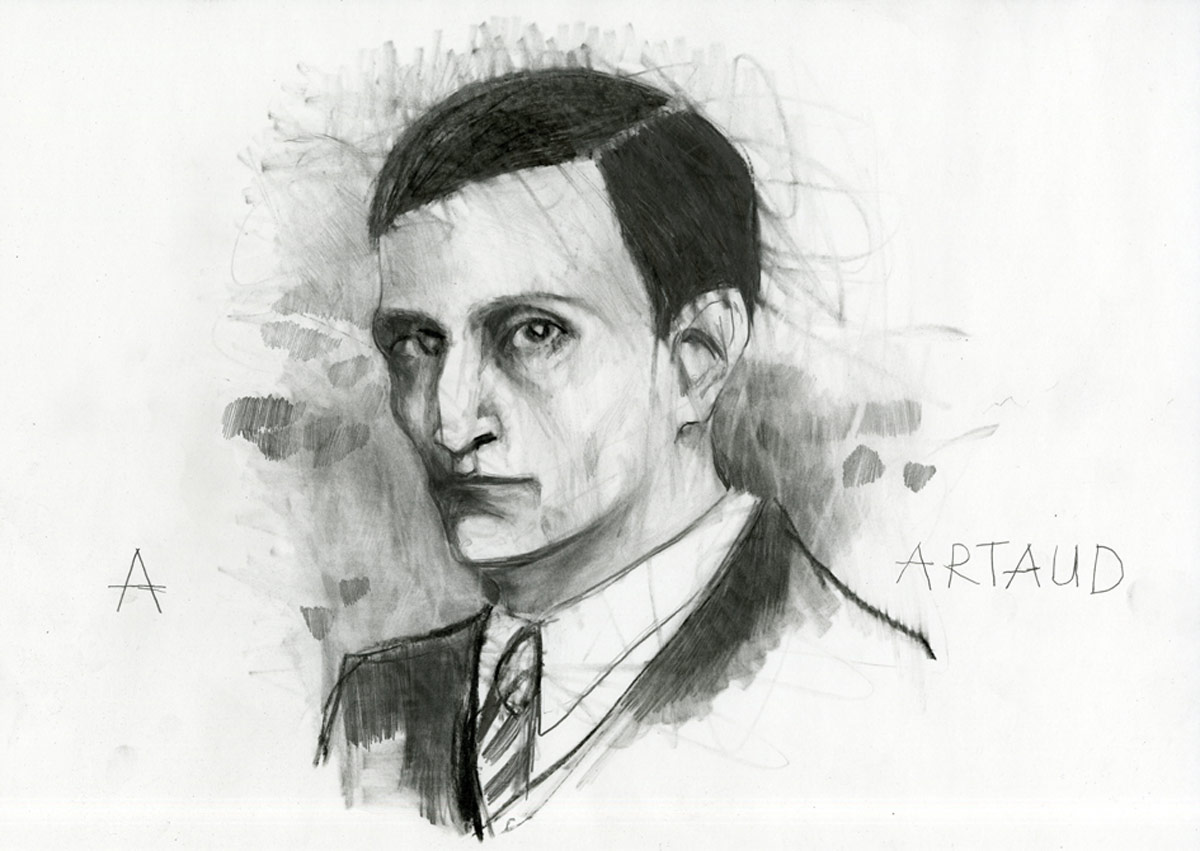
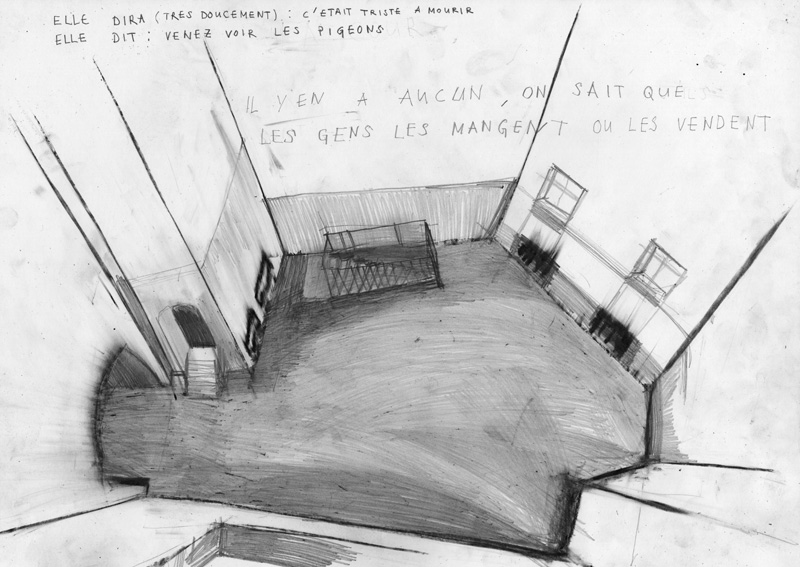

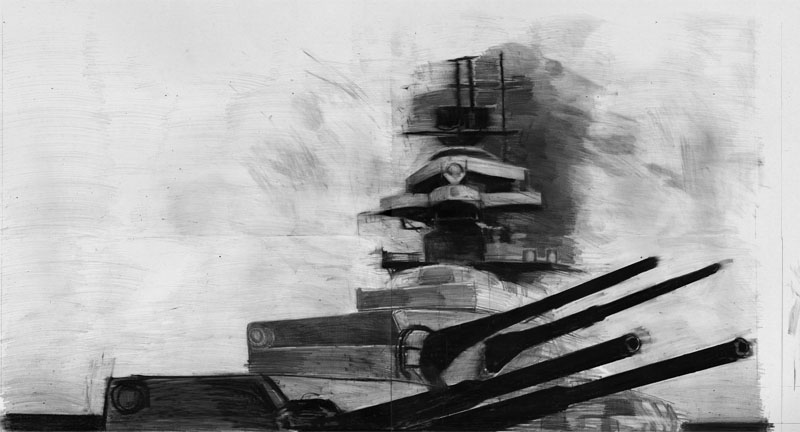
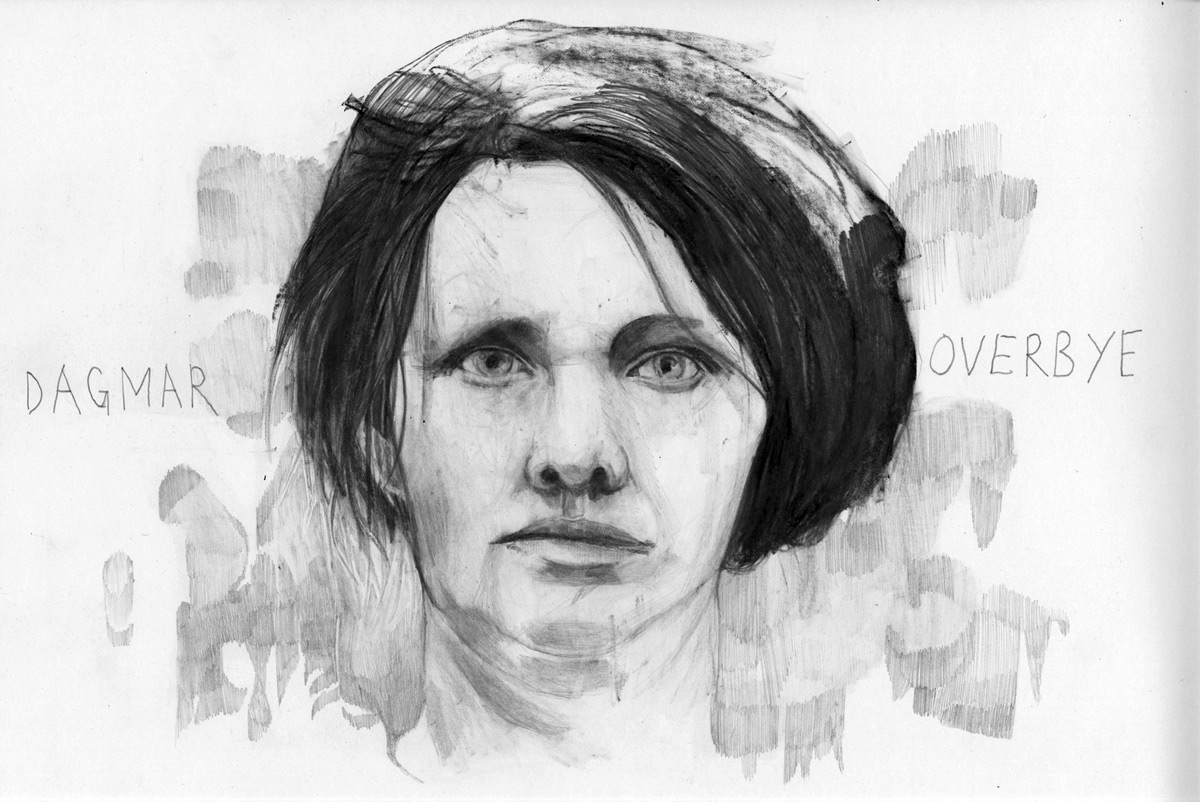




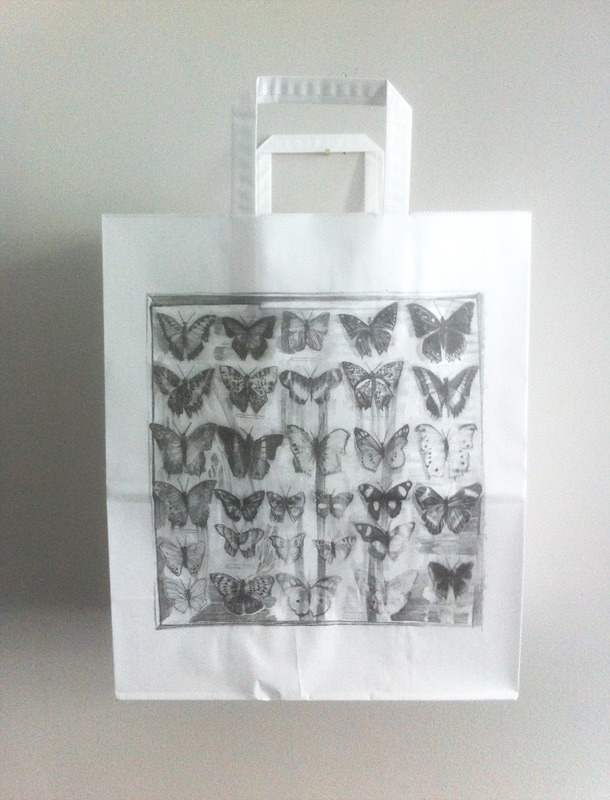














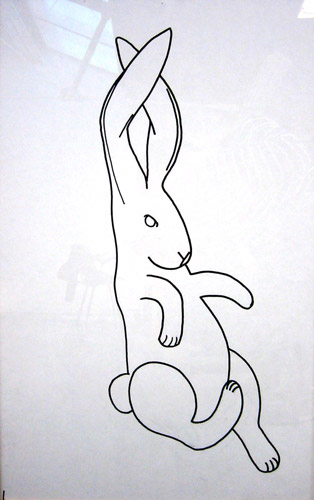
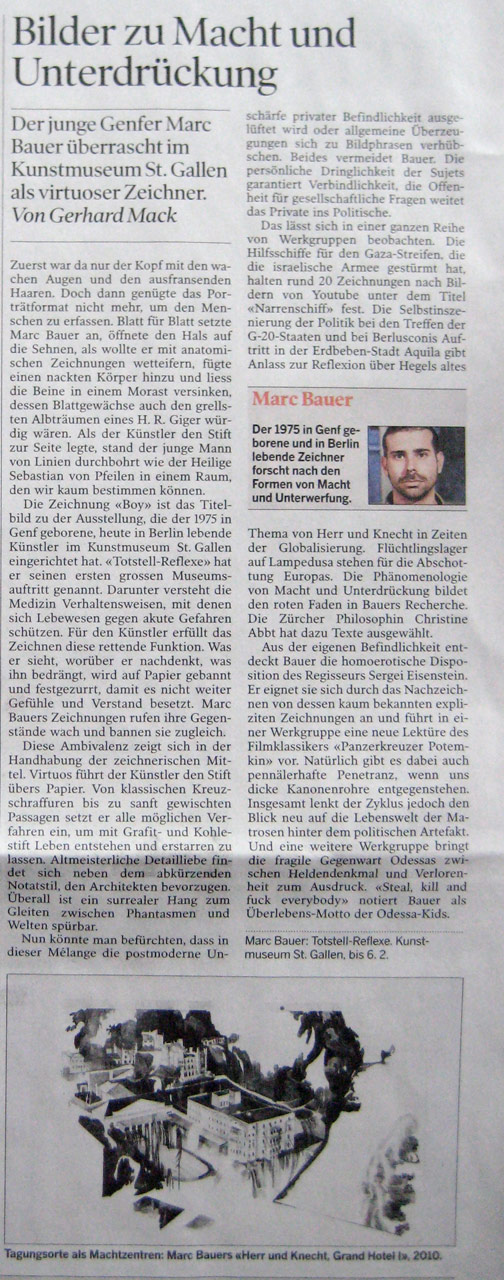
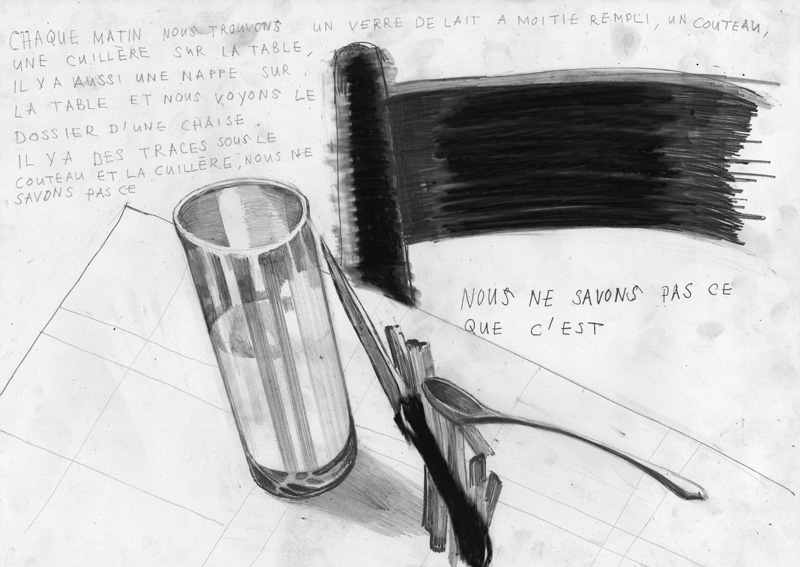
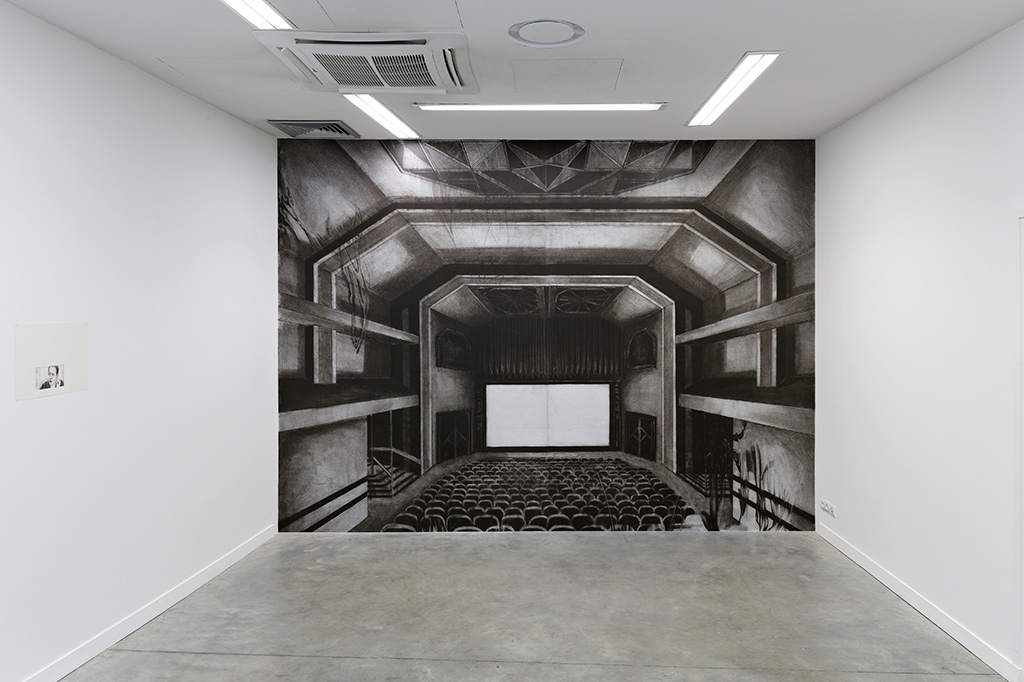


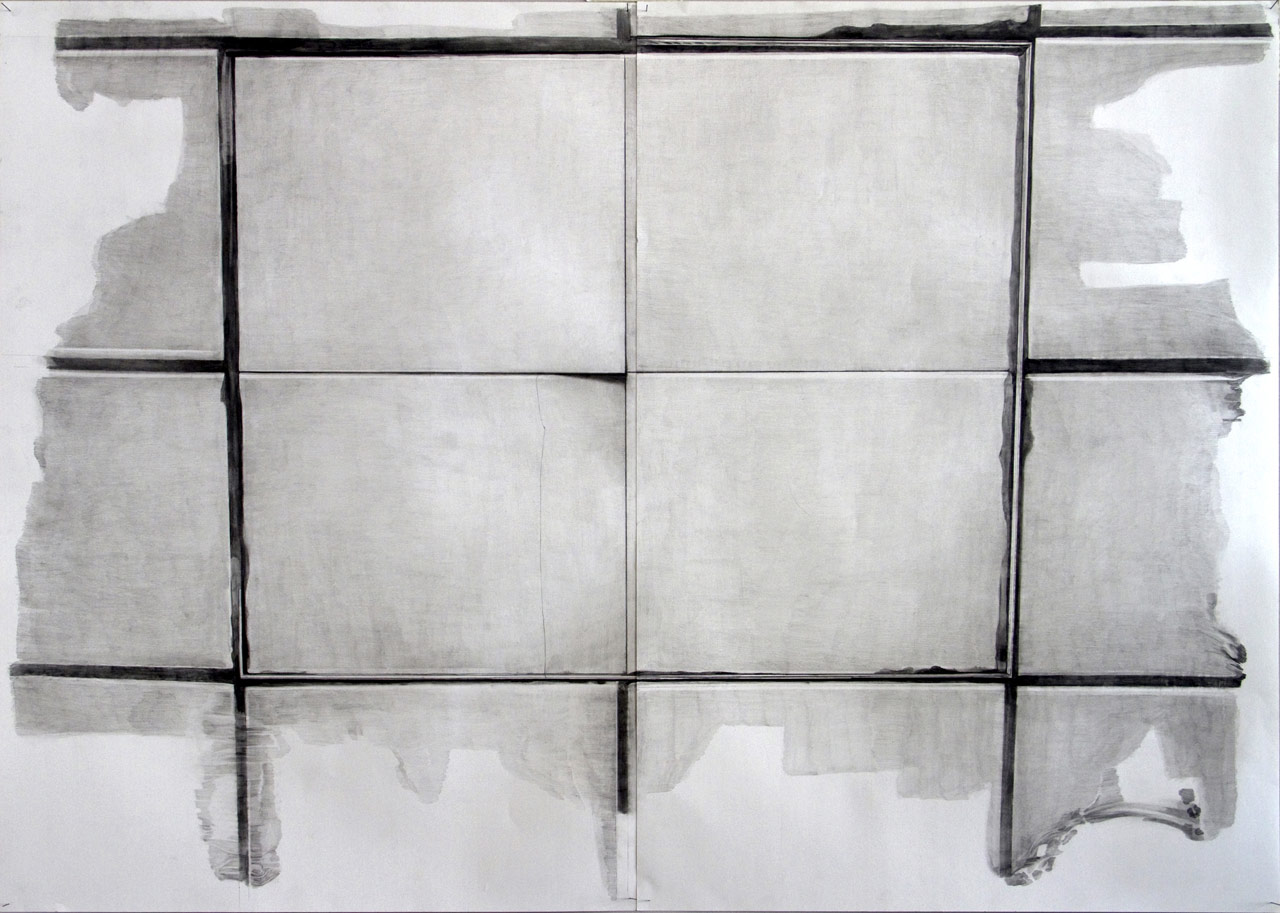


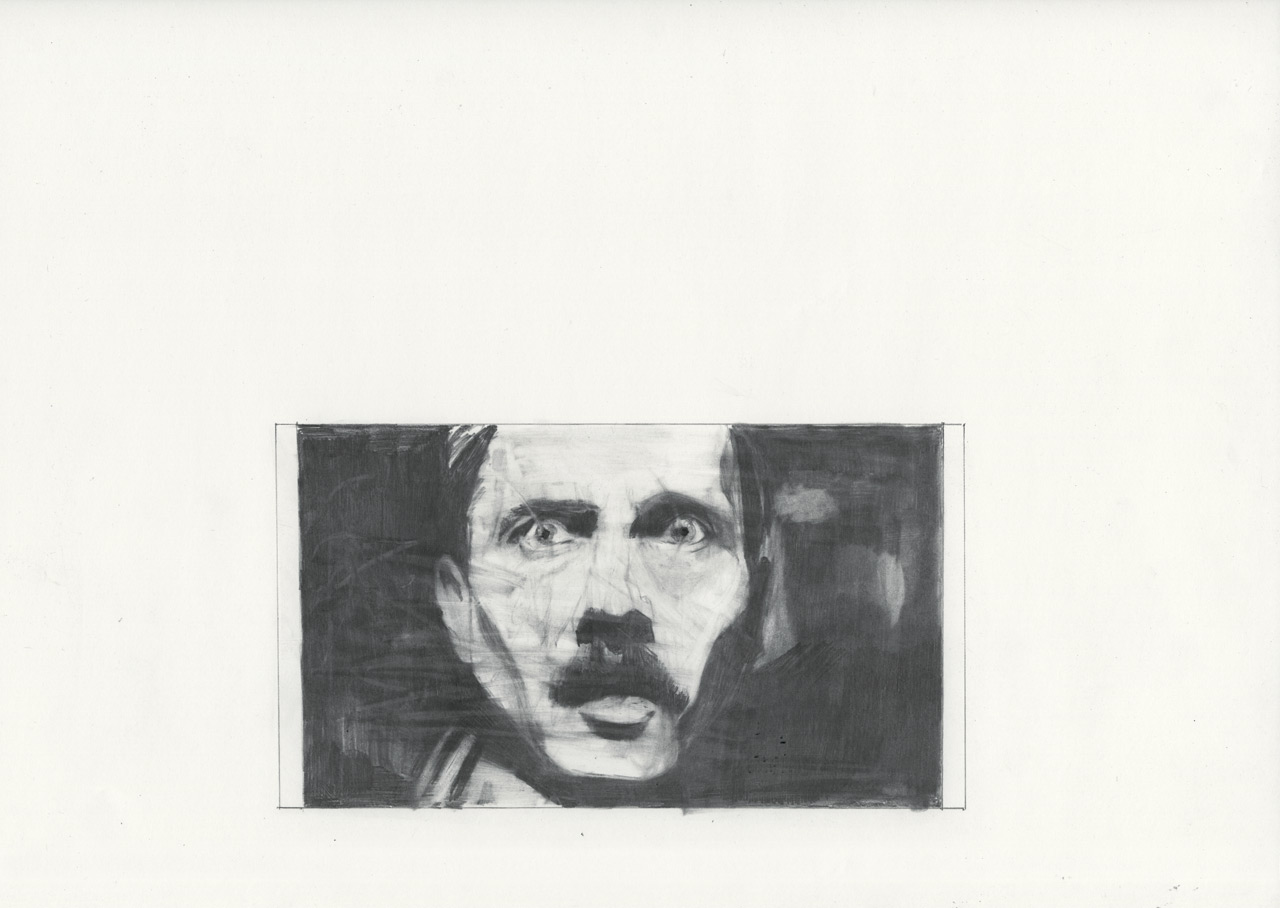
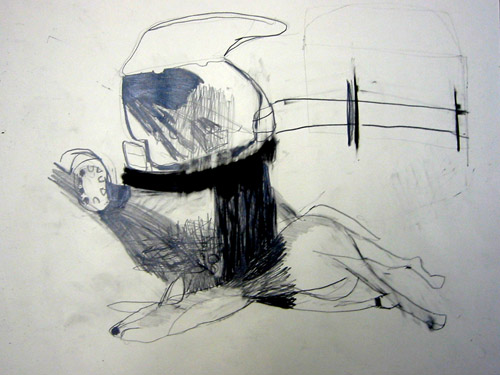

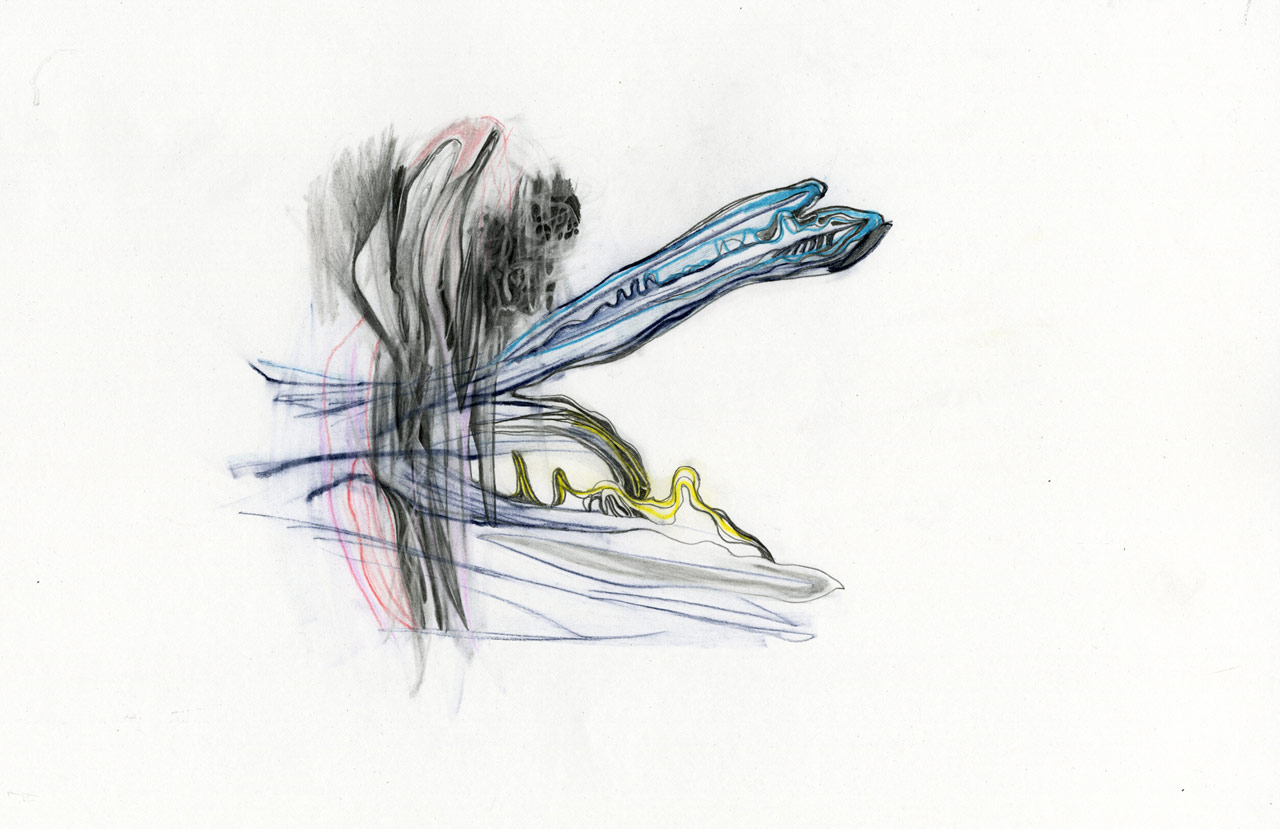
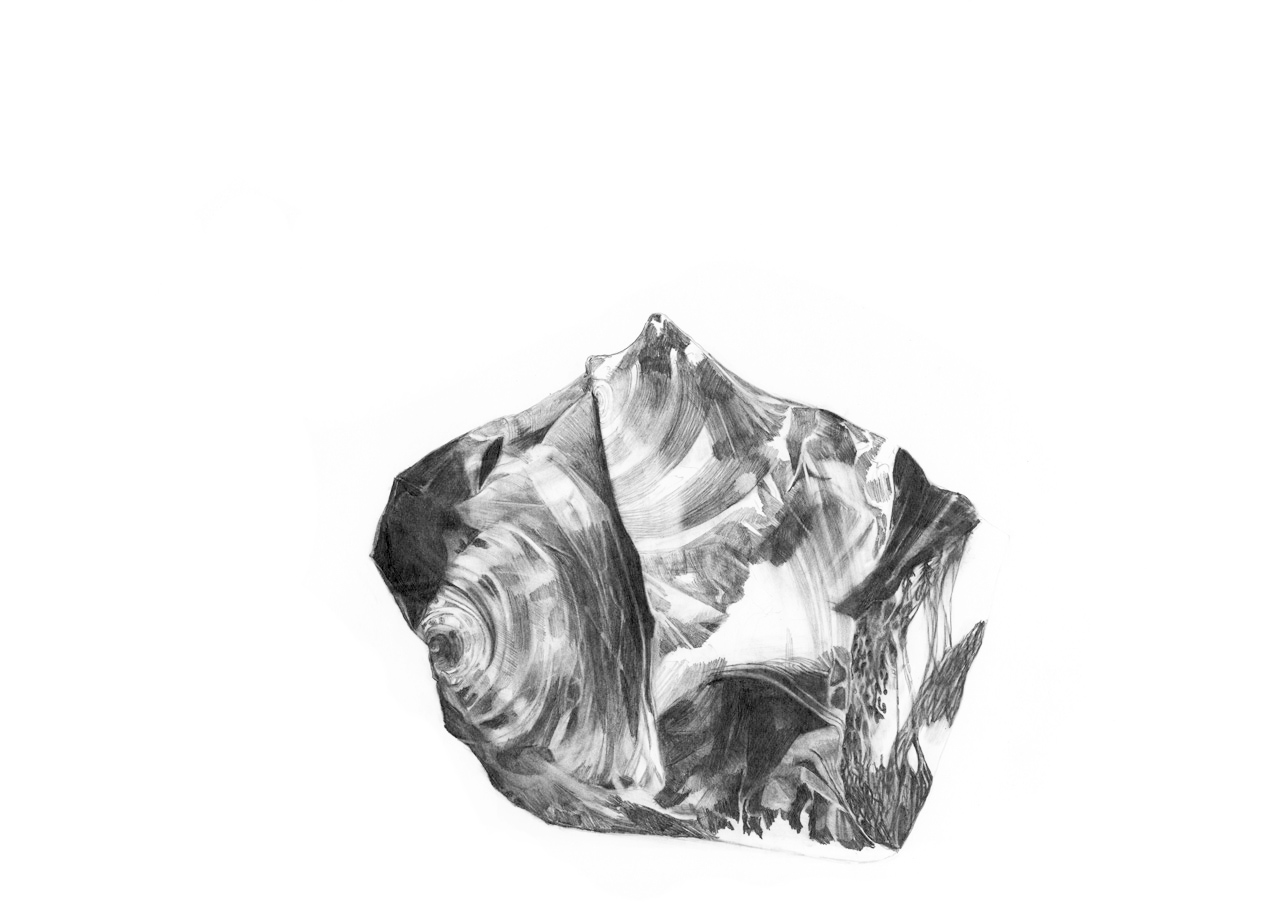
Galerie Peter Kilchmann, Architecture, Universität, Architektur, university, Prix Meret Oppenheim, Schweizer Grand Prix Kunst, Grand Prix Suisse d’Art
Marc Bauer exhibition at Galerie Peter Kilchmann
artist Marc Bauer's biography at Galerie Peter Kilchmann